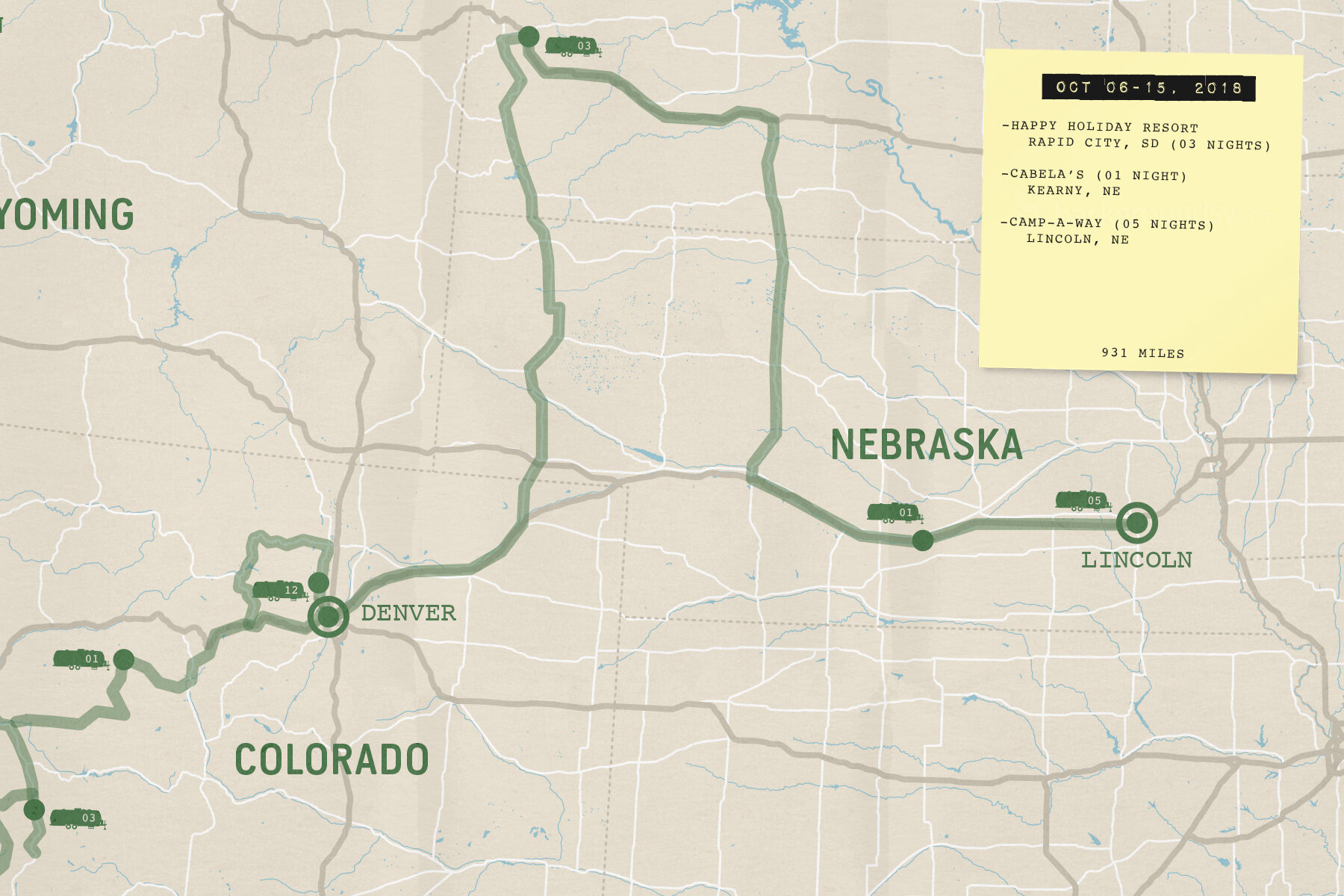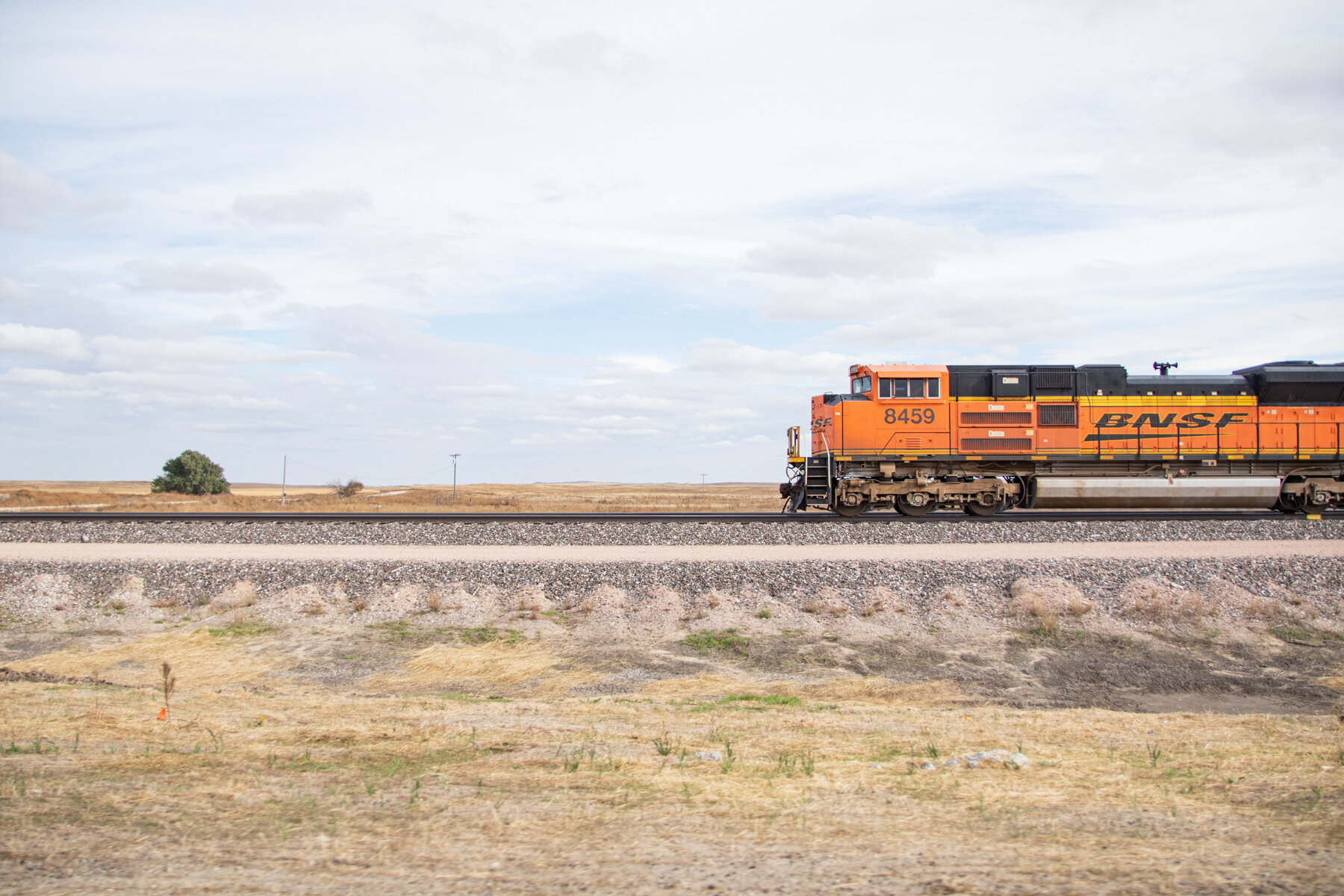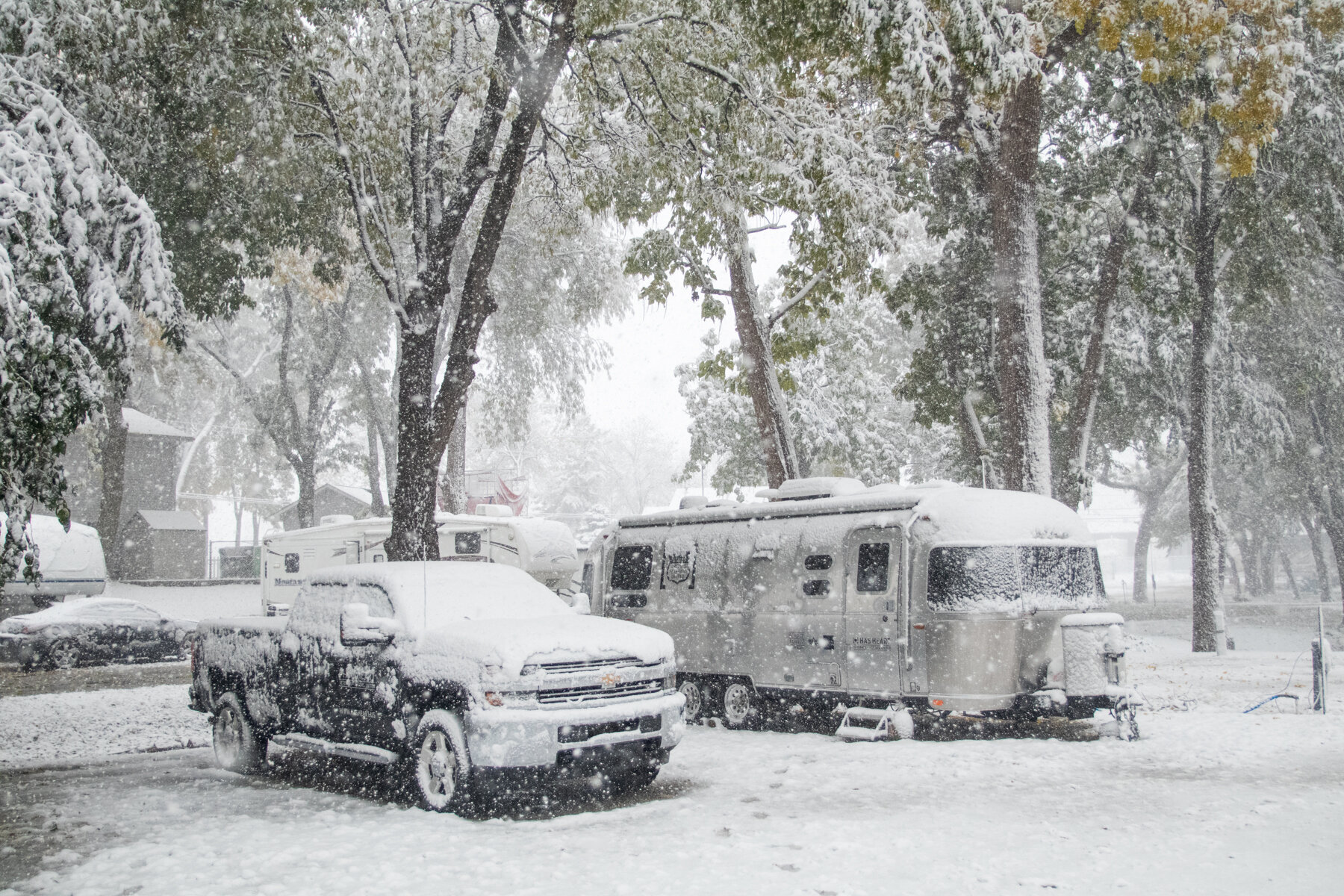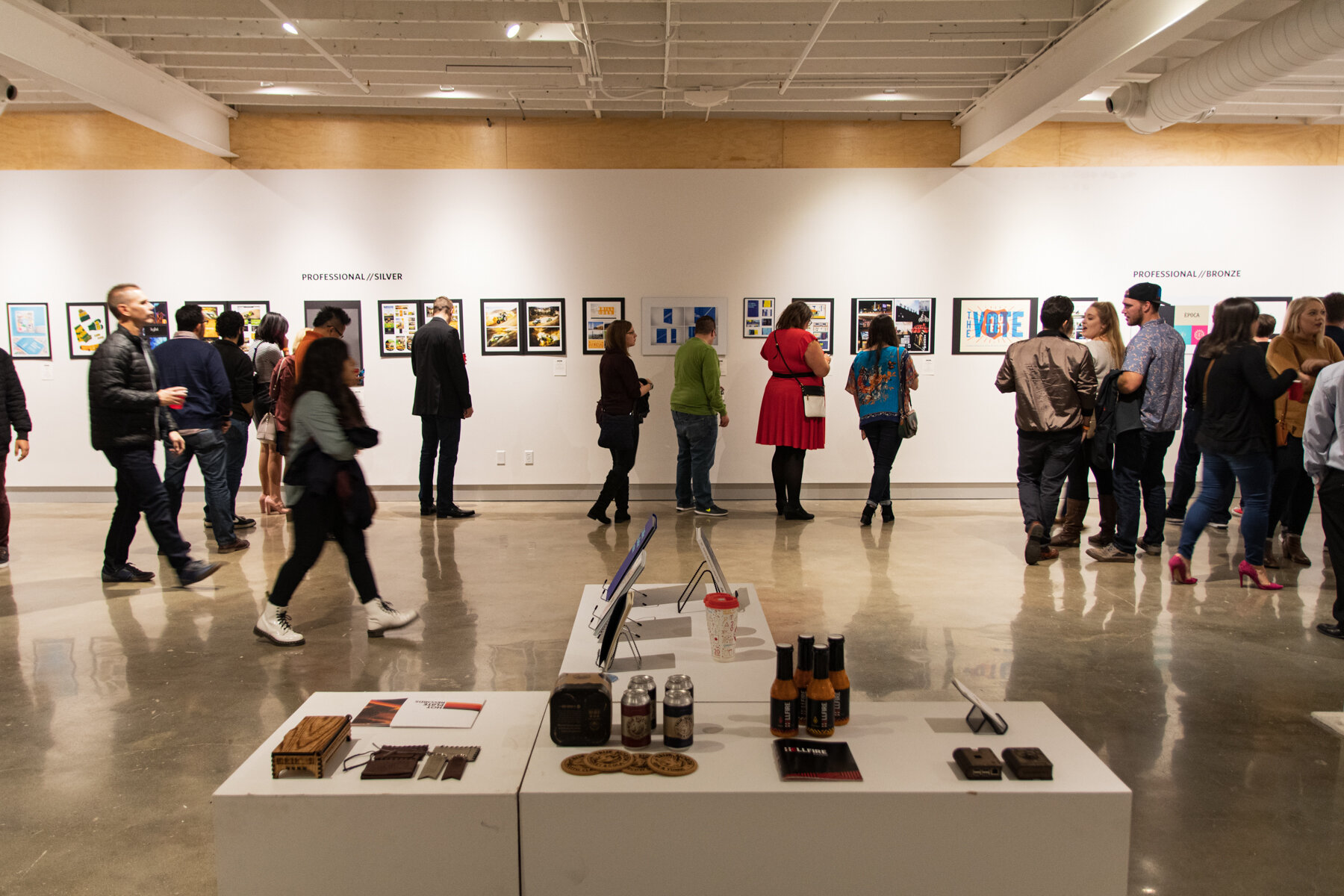STATE 30: NEBRASKA
We knew we made it to Nebraska when we saw Chimney Rock, the same natural monument that marked the Oregon Trail, California Trail, and Mormon Pioneer Trail for countless settlers from centuries past as they made their way westward to start a new life.
Before that, the Native Americans from that area, mainly the Lakota Sioux, referred to it as a term that translates as “Elk Penis” — I guess they called it as they saw it.
The Chimney Rock-Scotts Bluff National Monument visitor center had a nice little museum of local artifacts and a helpful timeline of milestone events that helped us imagine what life would have been passing through Nebraska on these caravan trails westward. Such a different time back then, it’s crazy to think about.
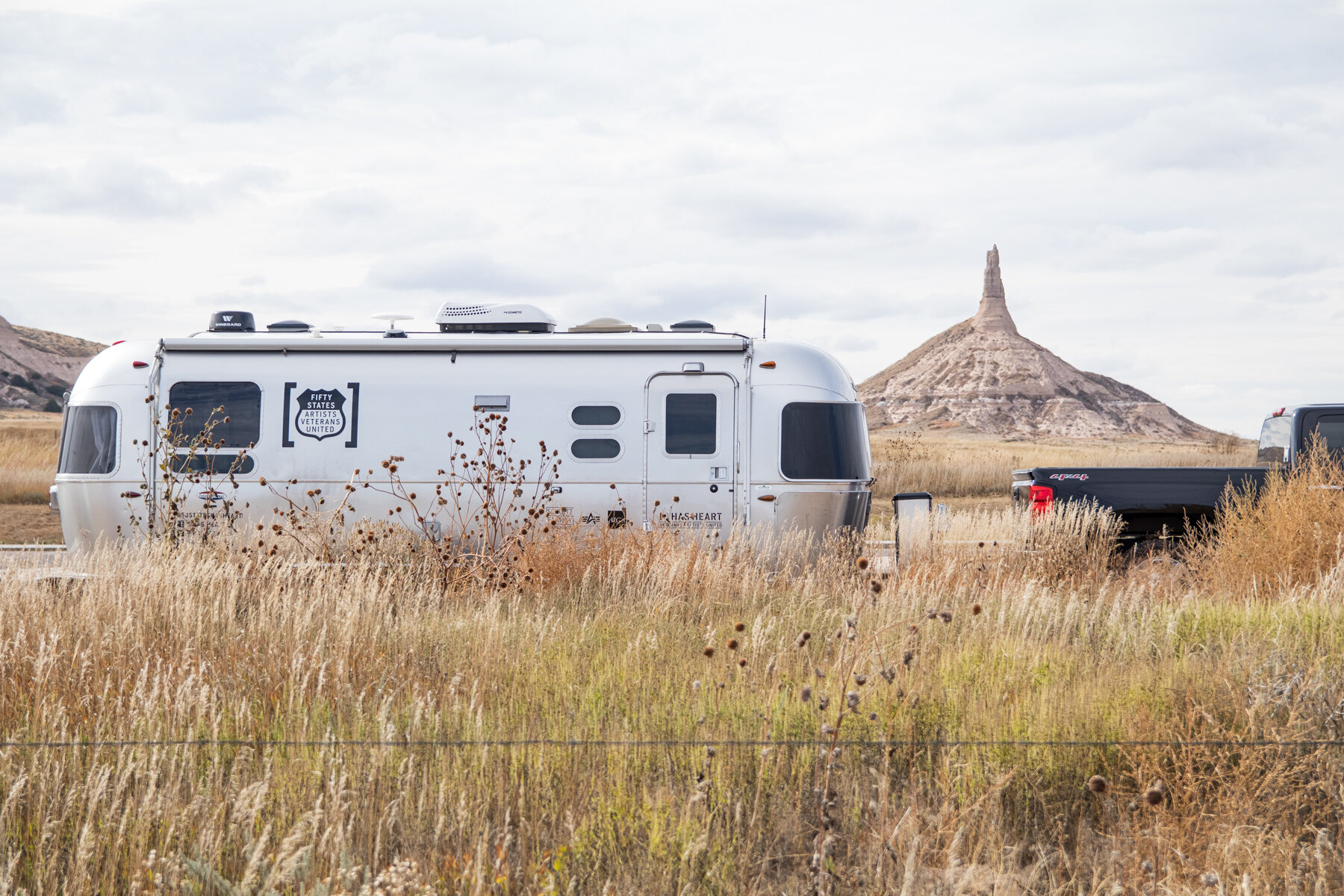


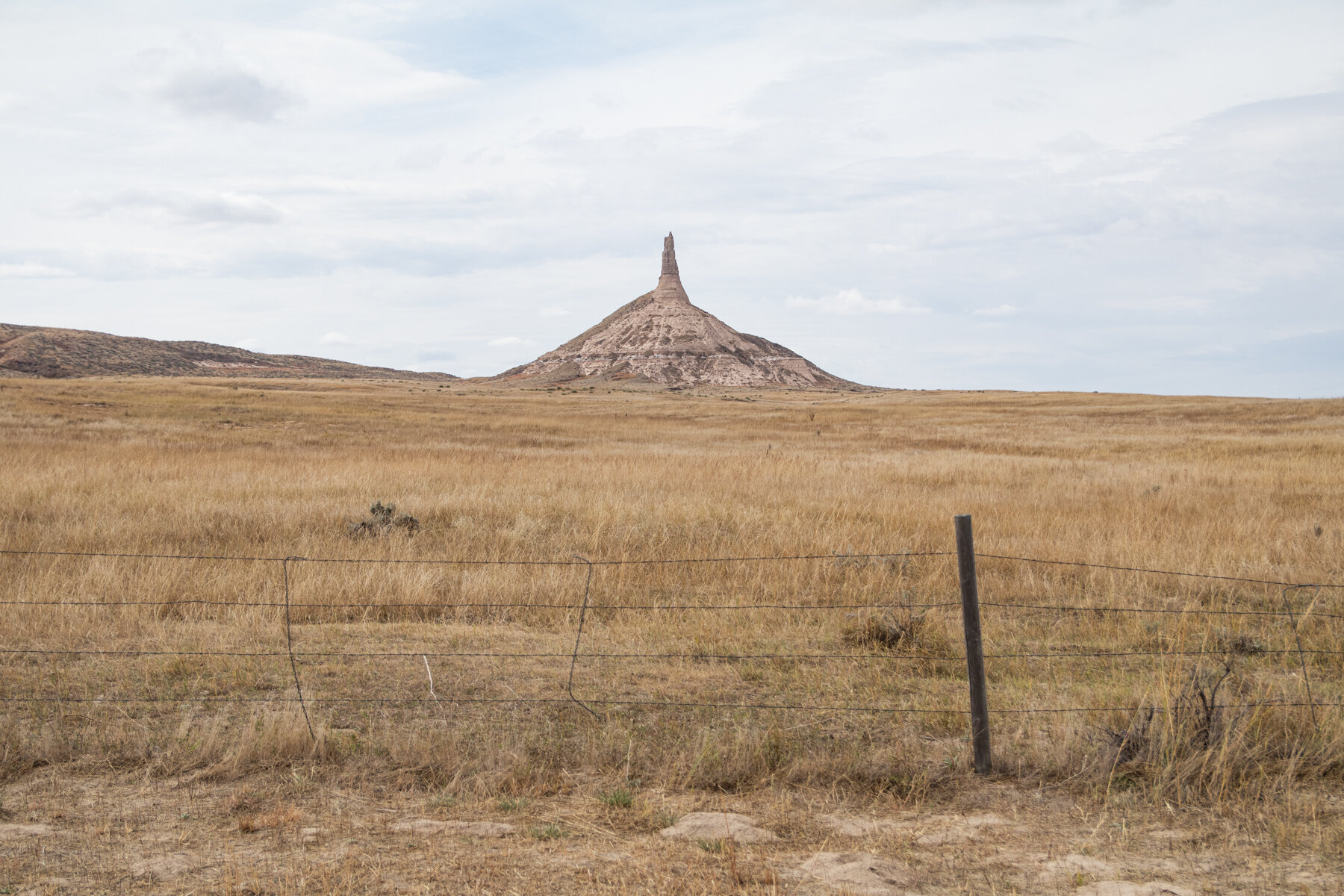
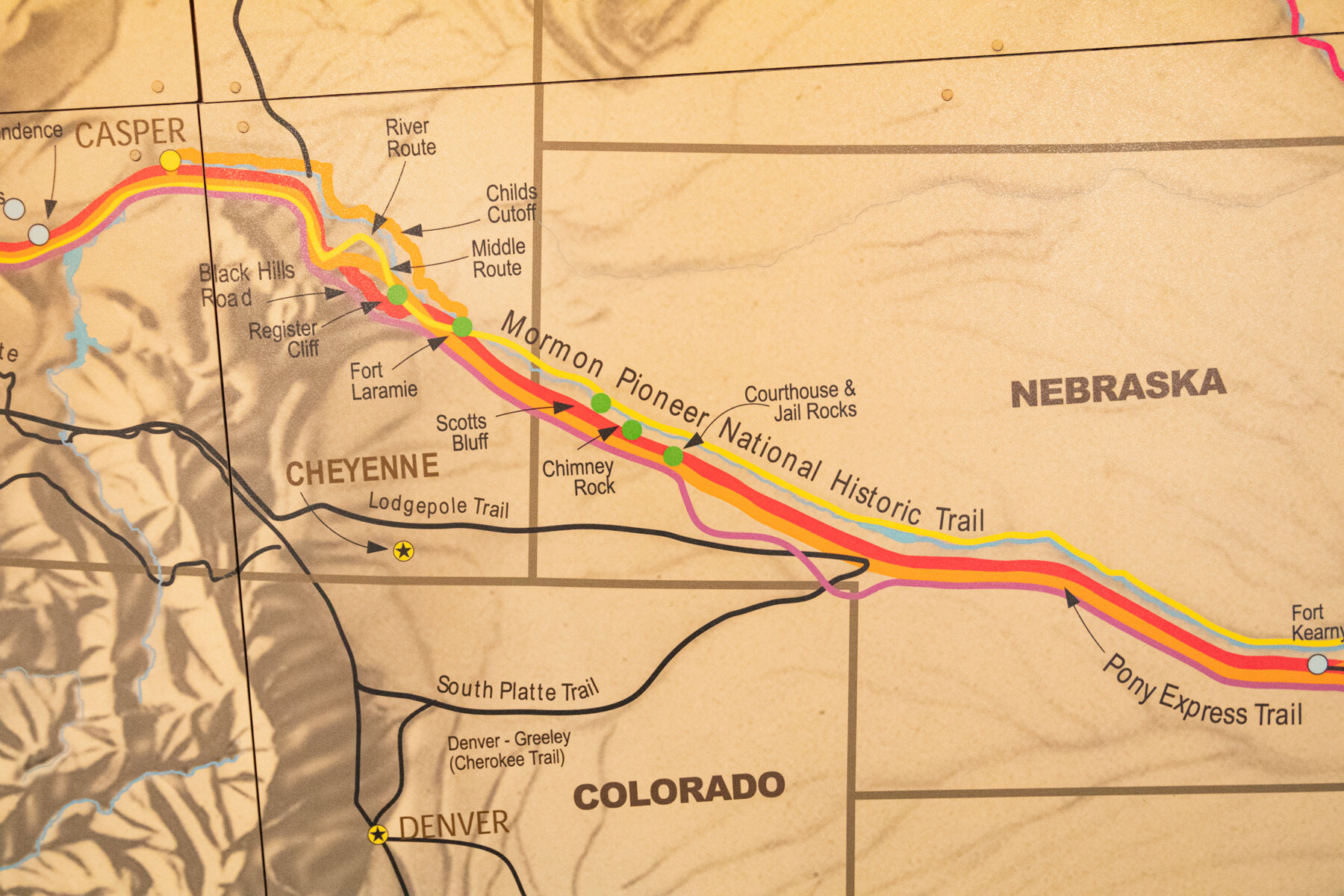
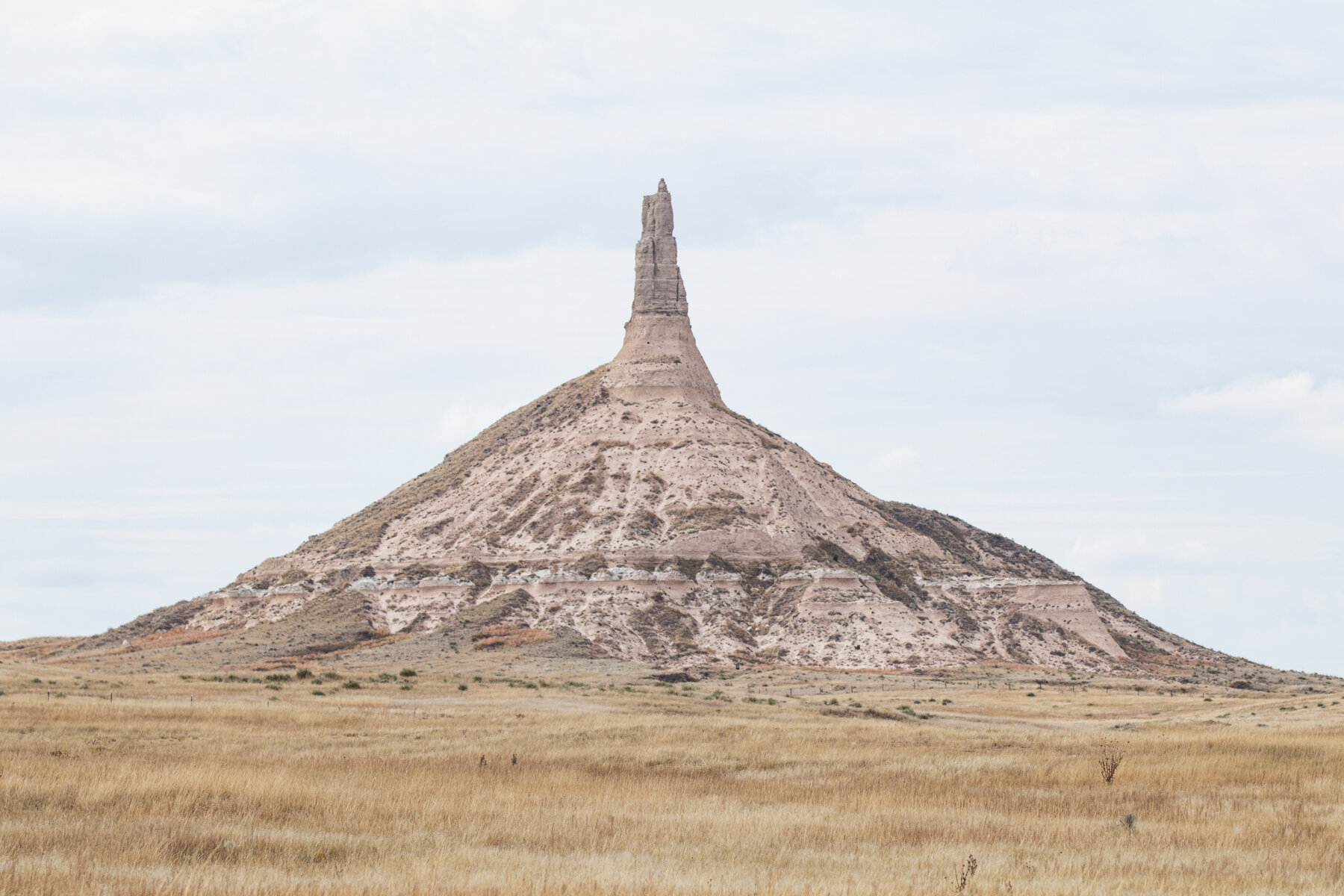
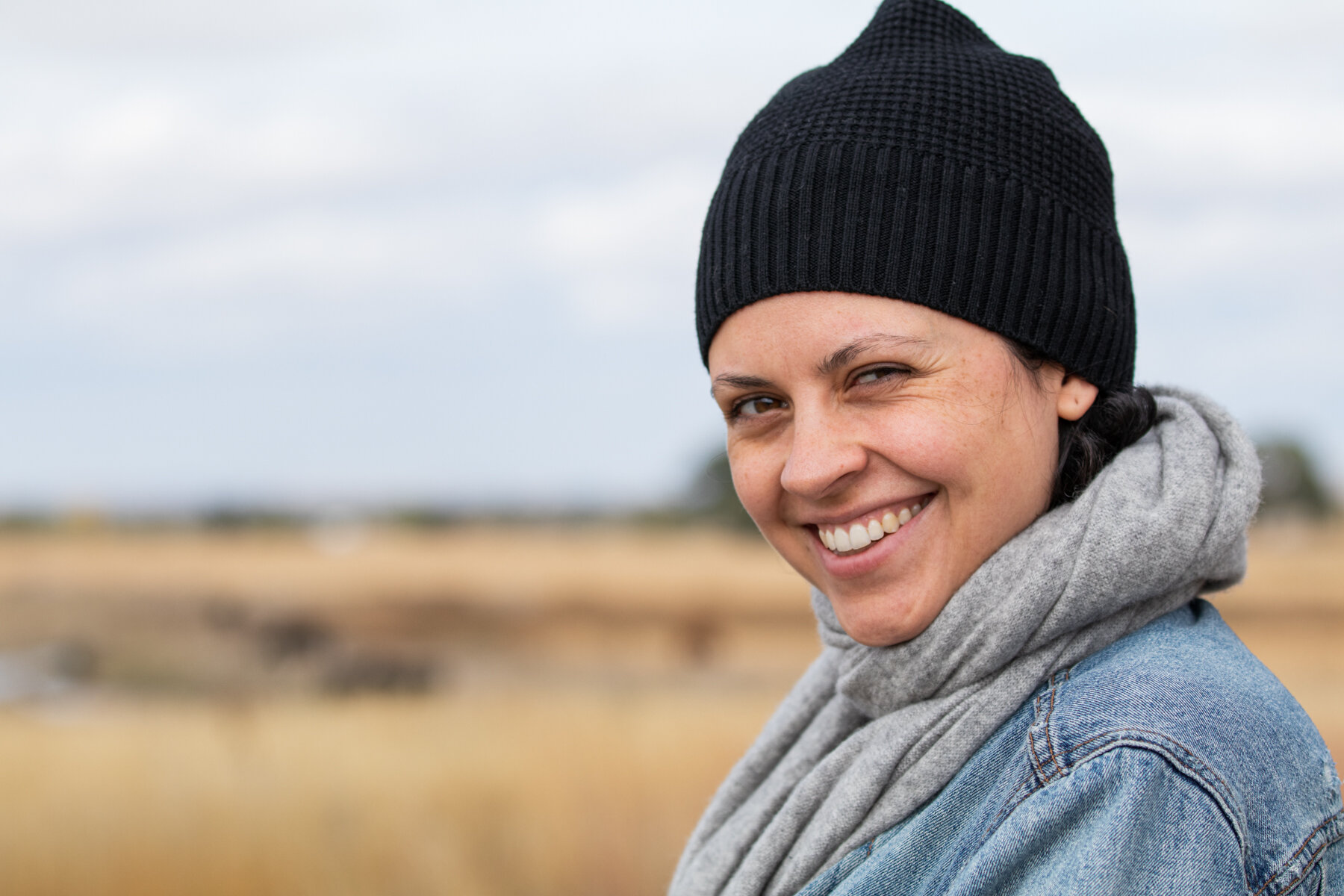
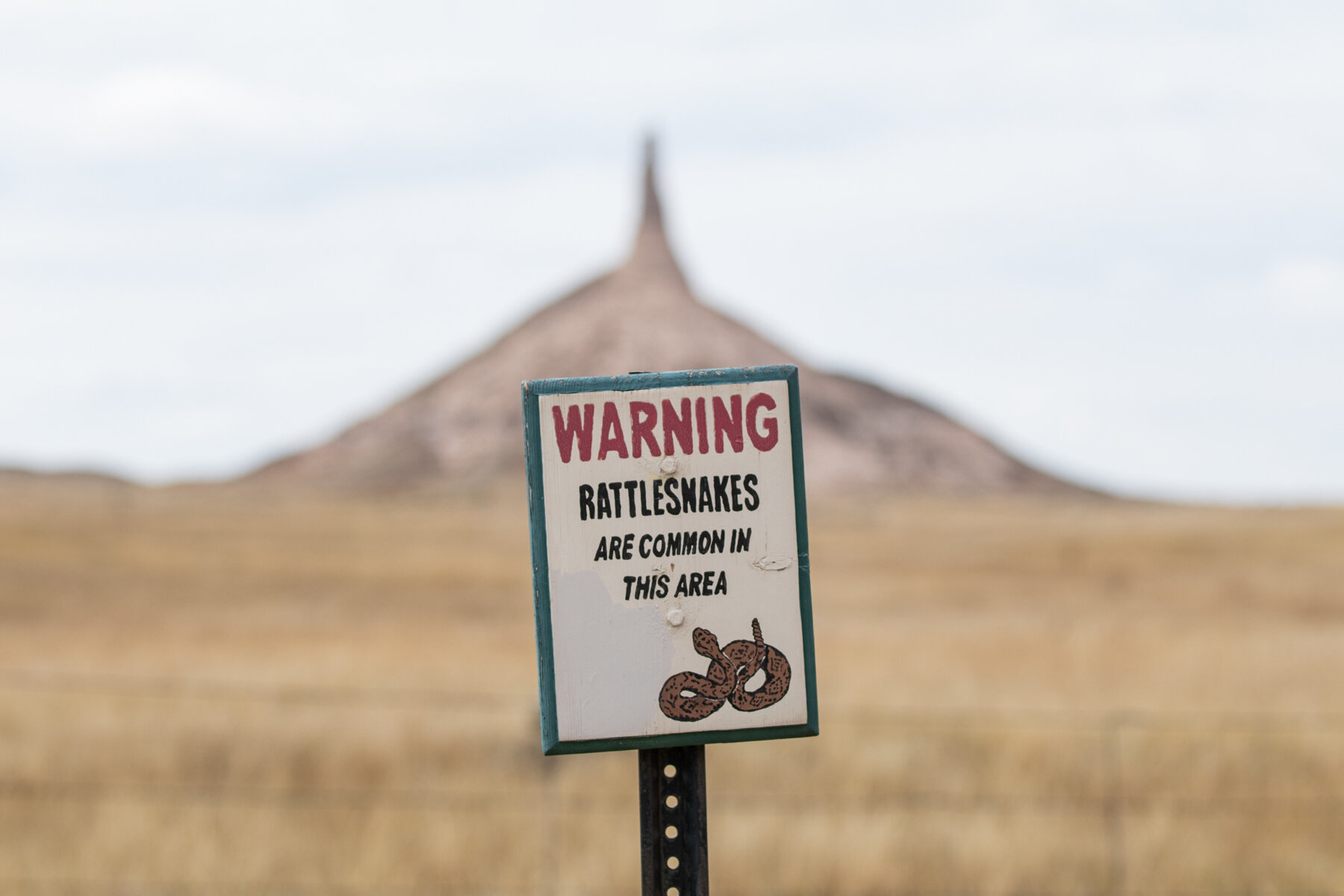
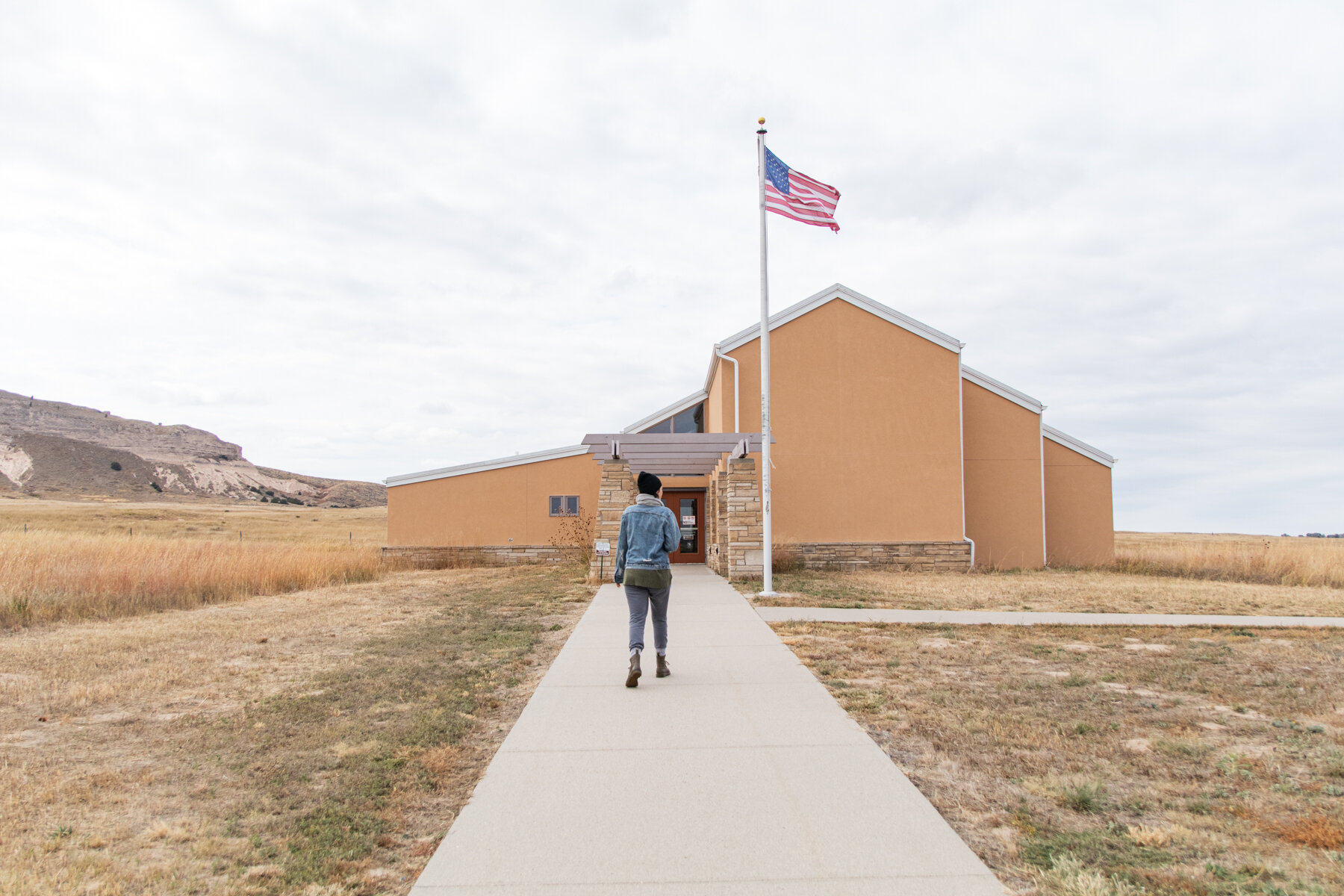
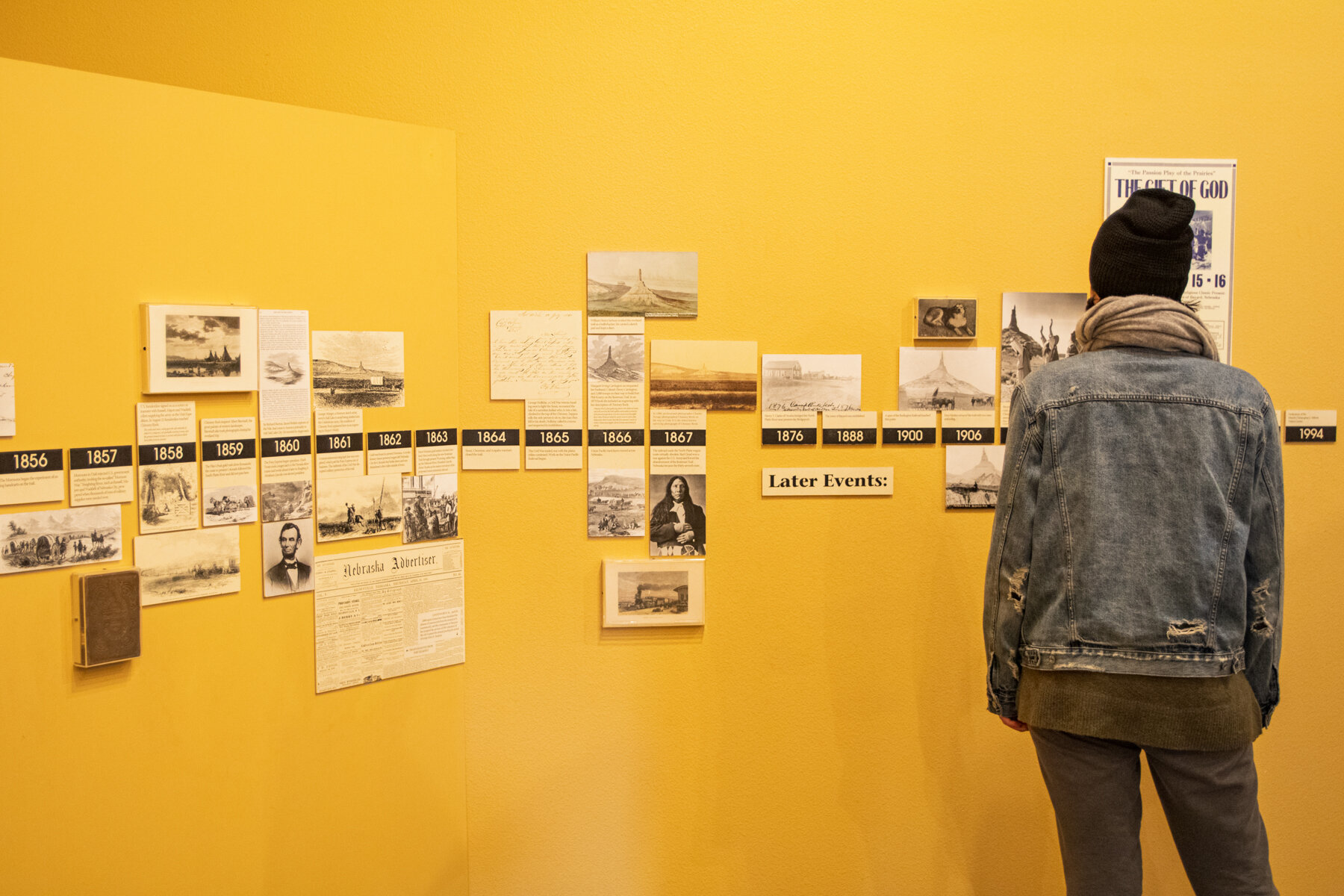

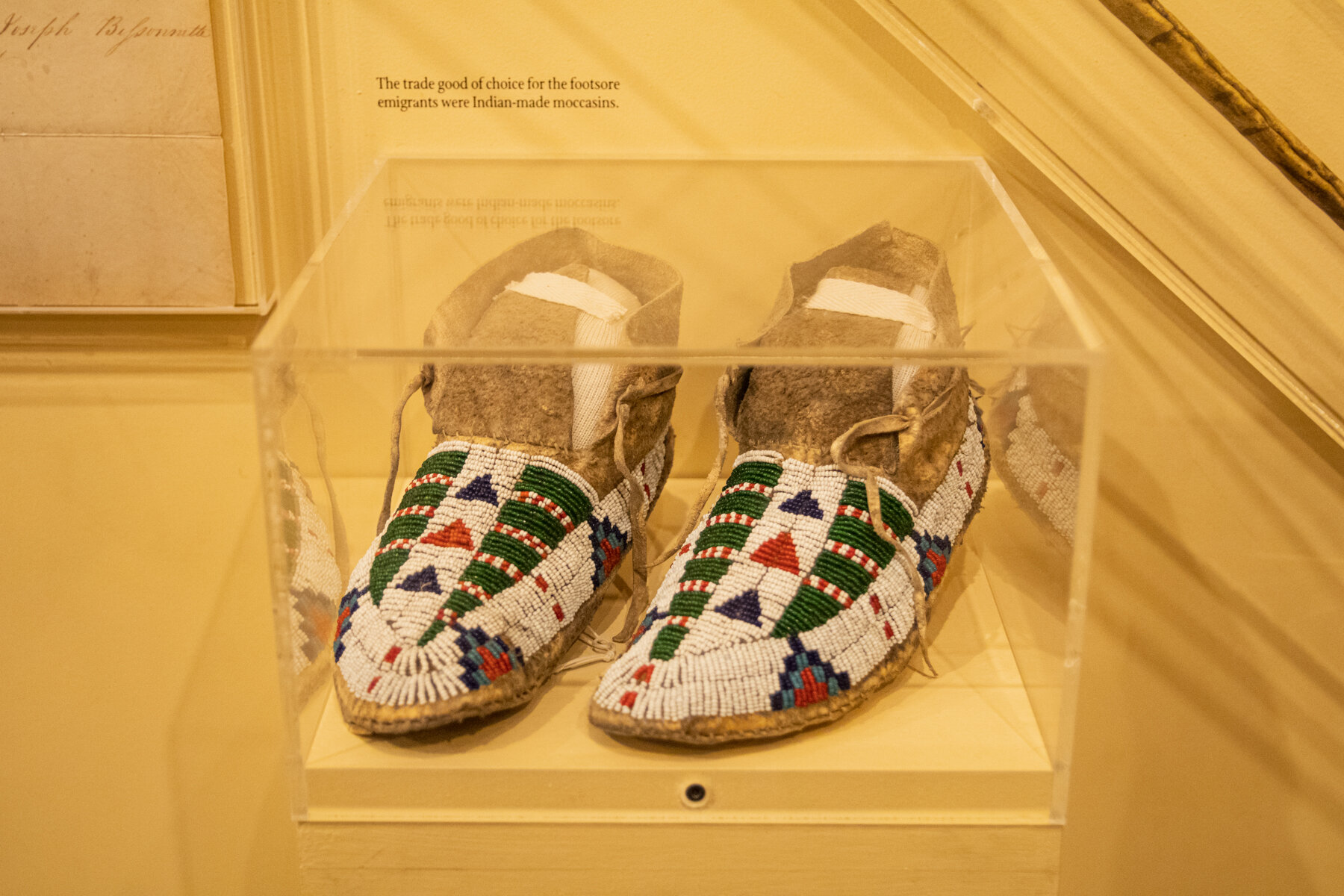

We actually didn’t stay long in Nebraska at first because we knew this would be our only chance to visit certain sites in South Dakota that we wanted to see since the rest of our planned route later on in the tour would keep us on the east side of the lower Dakota. So like the many settlers and fur traders before us, we kept moving onward through Nebraska (except we went north).
We stayed a few cold nights in Rapid City at the Happy Holiday RV Resort. Once we parked, we realized we forgot our 30 Amp power supply cord. Back in STATE 29: Colorado, our power cord got chewed up by the mower. The campground office bought us a new one but unfortunately placed on the picnic table with the old one outside at our site and we mistakenly pulled away with those left still there.
We had to jerry rig a 12-volt extension cord through our door with a power strip inside so we could charge our phones and laptops. If the weather would have been at least mild, then it would have been fine. But of course, an early snow storm rolled in with freezing temperatures. So not all was well in Waffleville for those few days.
Nonetheless, we were still able to venture out to Badlands National Park despite the cold and unfavorable conditions. We didn’t get any hikes in; we hardly even made it long enough to take in all the views because it was so damp and damn cold.
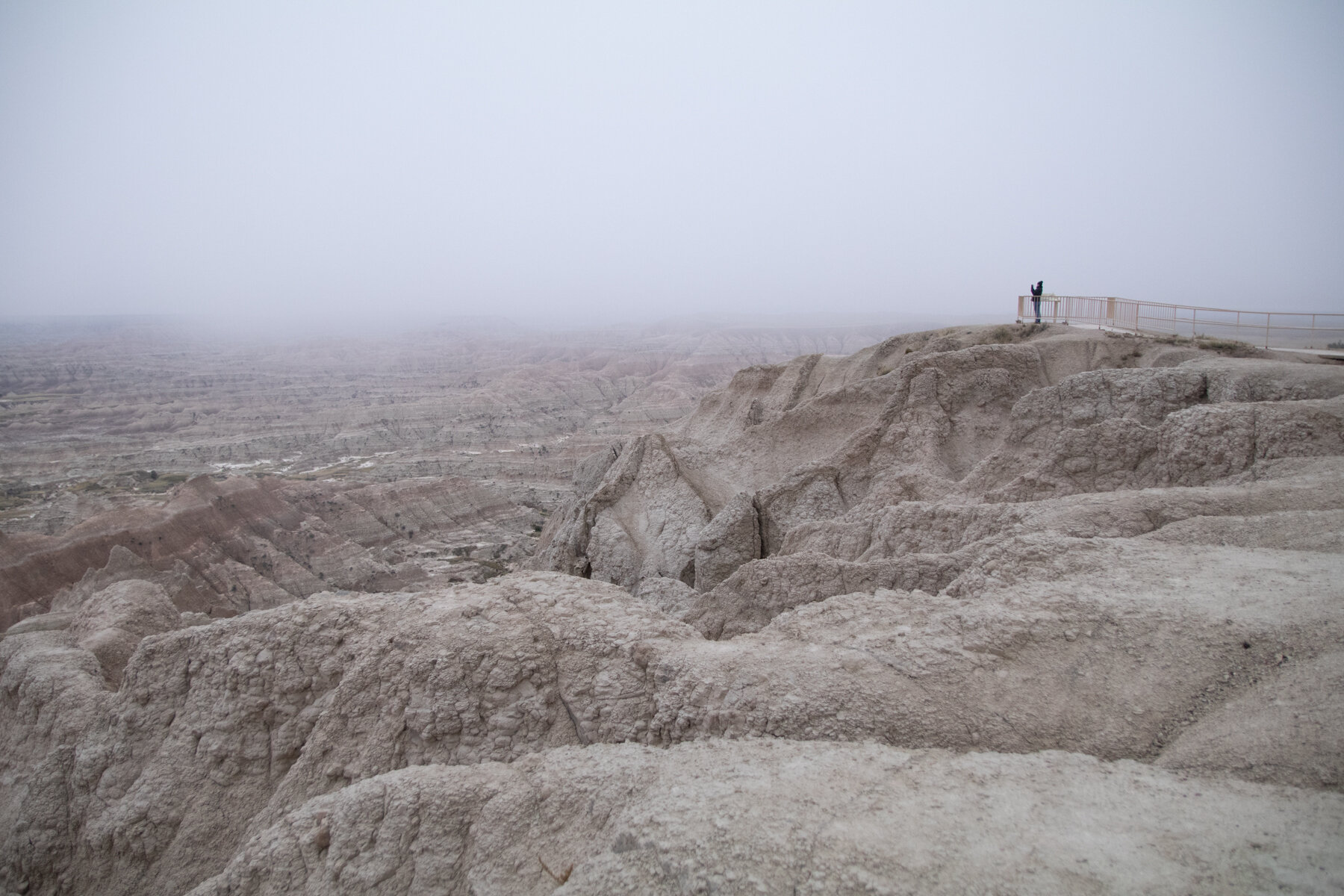
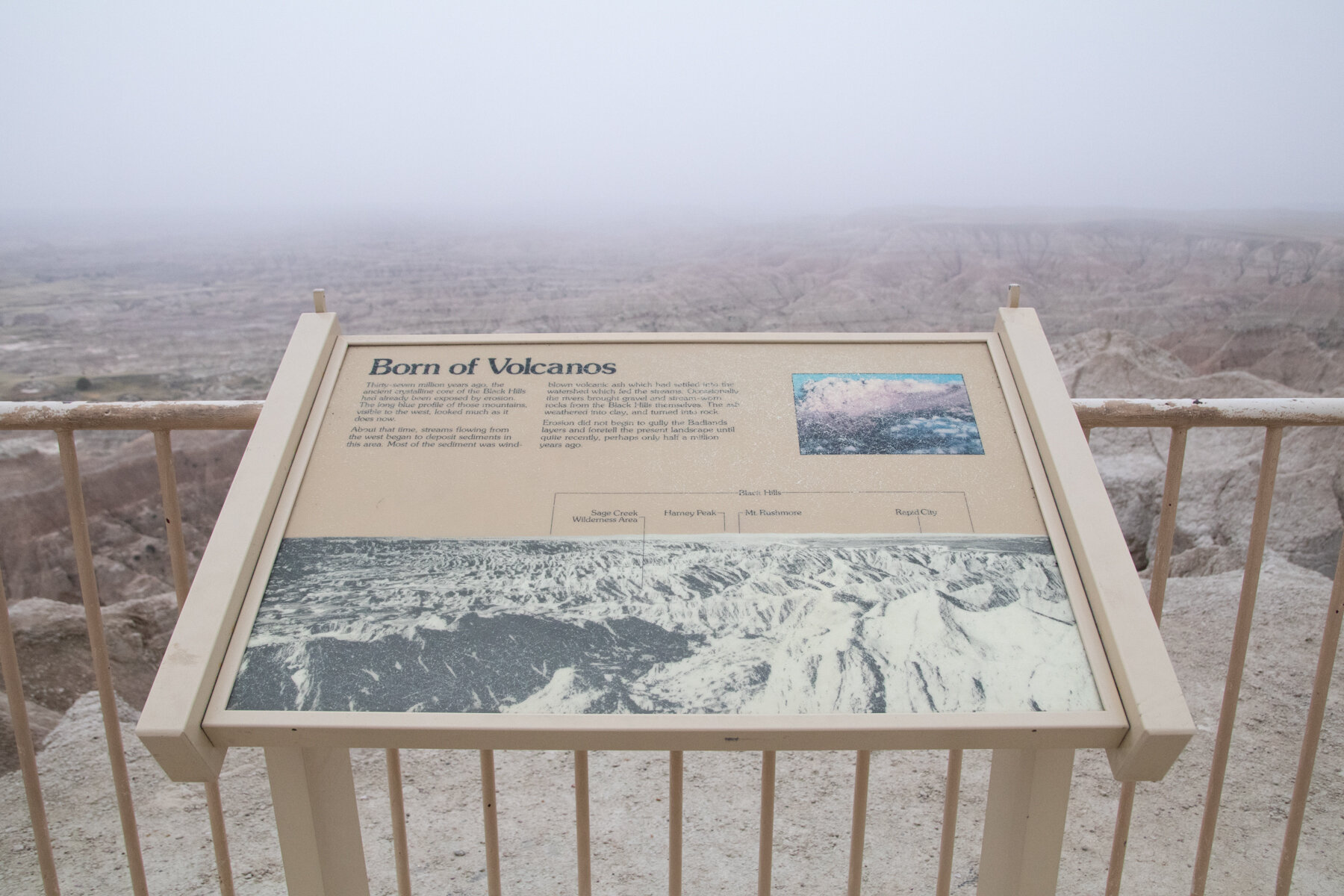
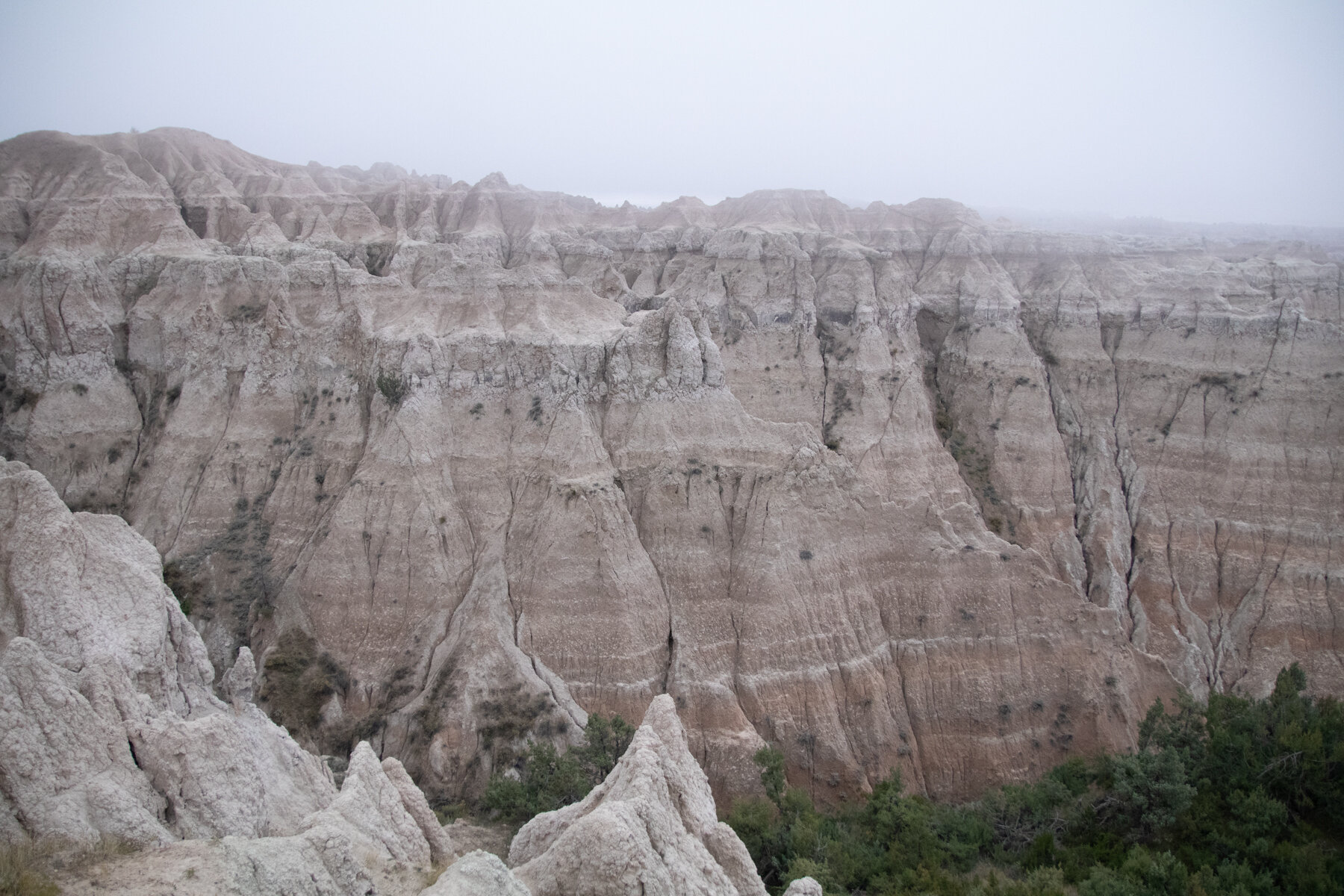
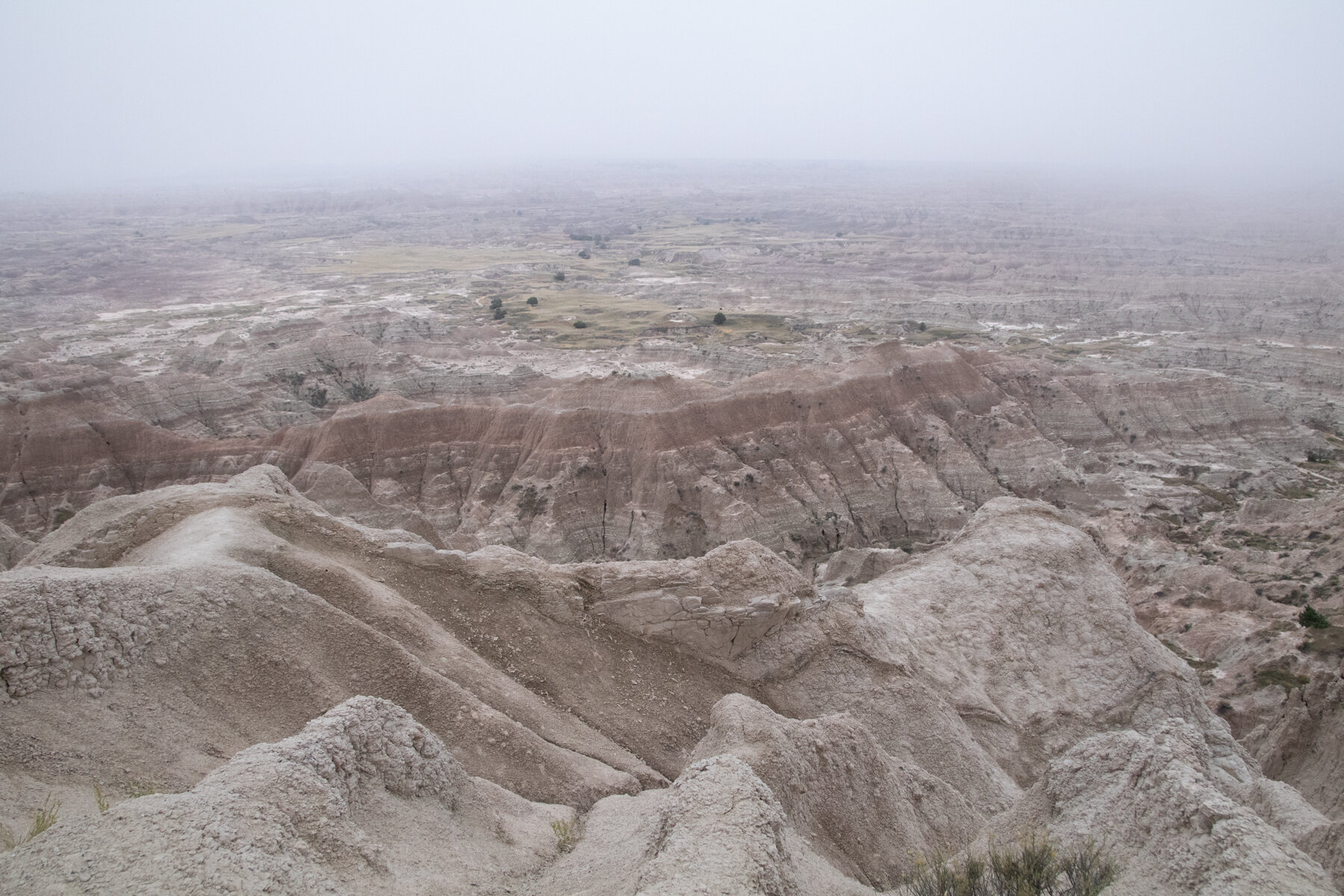
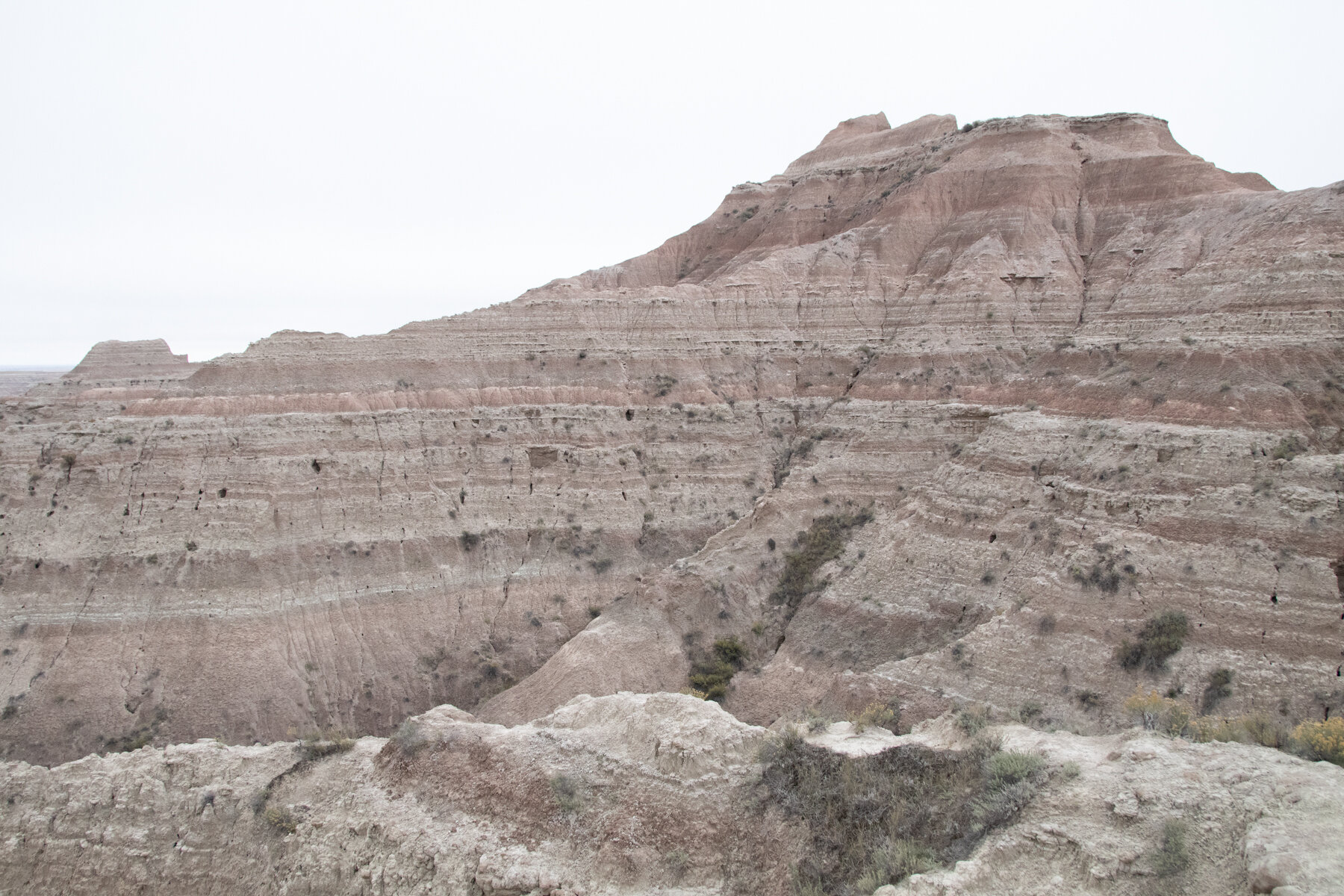
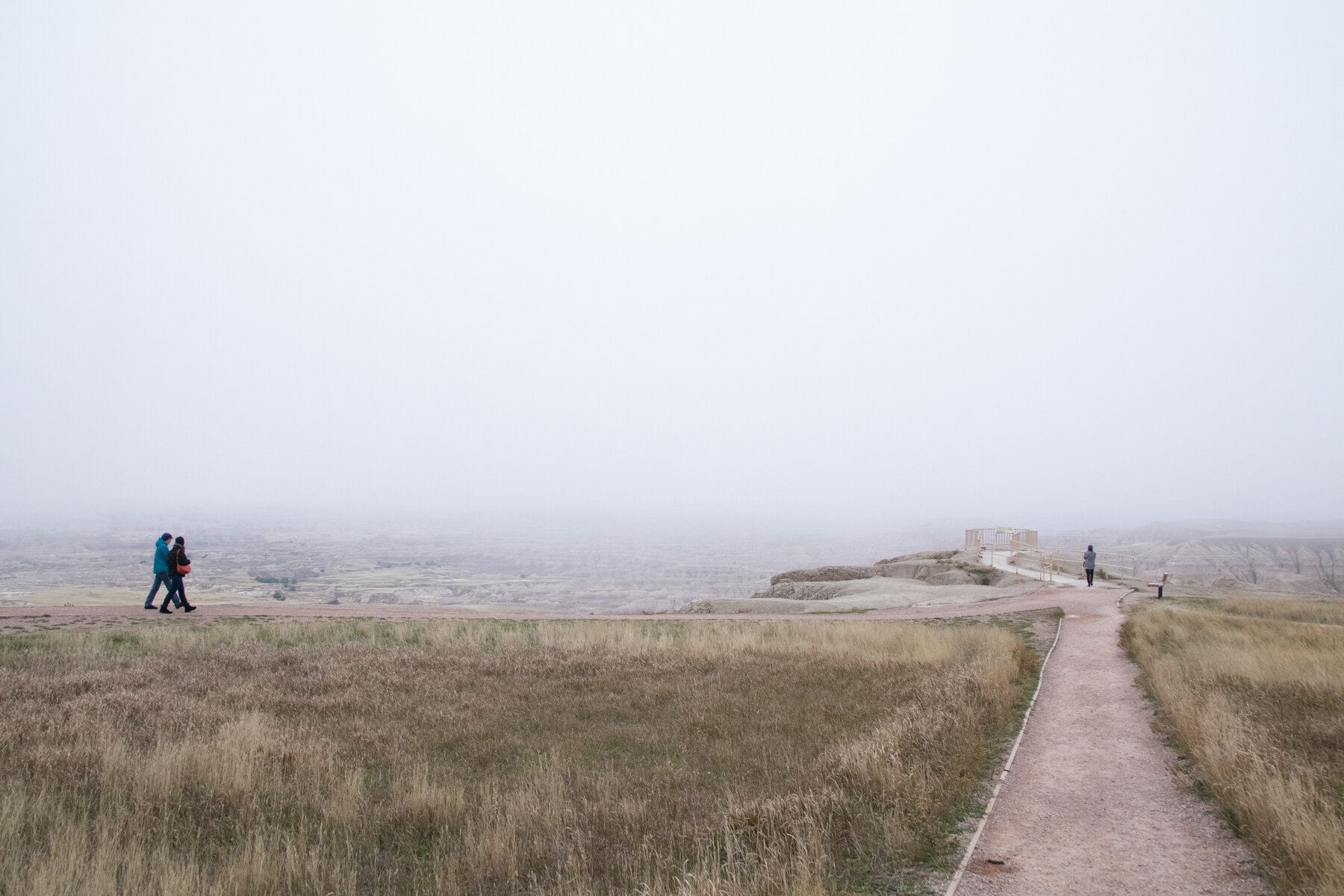
When I did step out of the truck to look around, my footscapes views came across pile after pile of mountain goat presents, but we couldn’t see any nearby. Then we climbed up a hill and looked out in the distance to see a herd that must have just passed through before we arrived.
After we got back in the truck and started driving again further into the park, we very soon after came across a family of bighorn sheep alongside the road — some wearing tracking collars for what we assumed to map their grazing patterns for research purposes.
Further into the park we continued to be baffled by these beautifully subtle color palettes of layered cliffs that in some areas looked inverted under the plainlands and exposed after millions of years of being built up and then gradually eroded. The informational plaques throughout the park shared that the bands are layers on built-up volcanic ash settlements that made their way here from the ancient volcanoes nearby in what is now known as the Black Hills.
The colors from the different minerals were almost rainbow-like in some areas. Although Badlands National Park may not be a breath-taking as many of the other national parks we’ve visited, it does have its unique beauty that should not be overlooked. Despite the cold and unfavorable weather conditions, we did our best to take it all in.
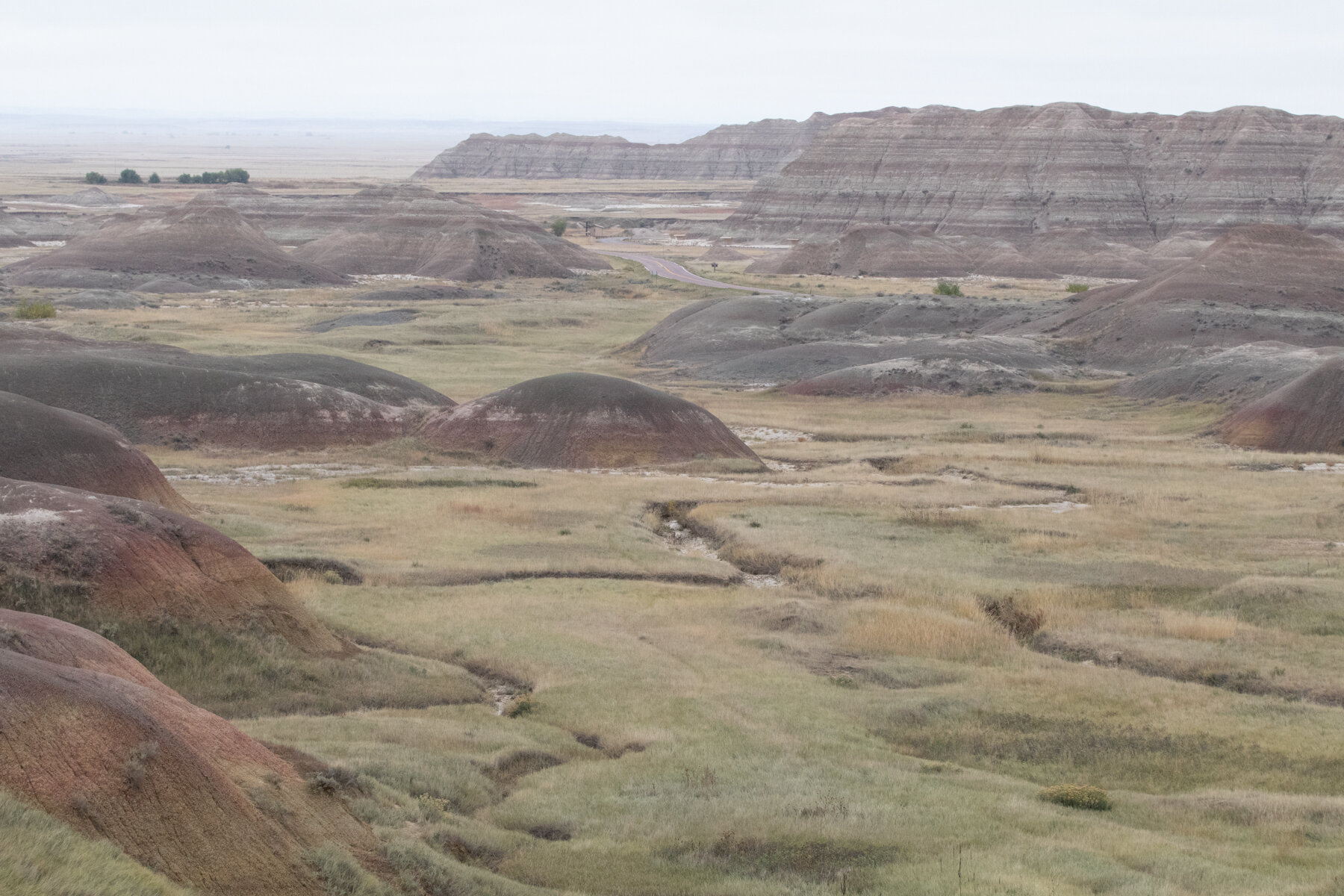
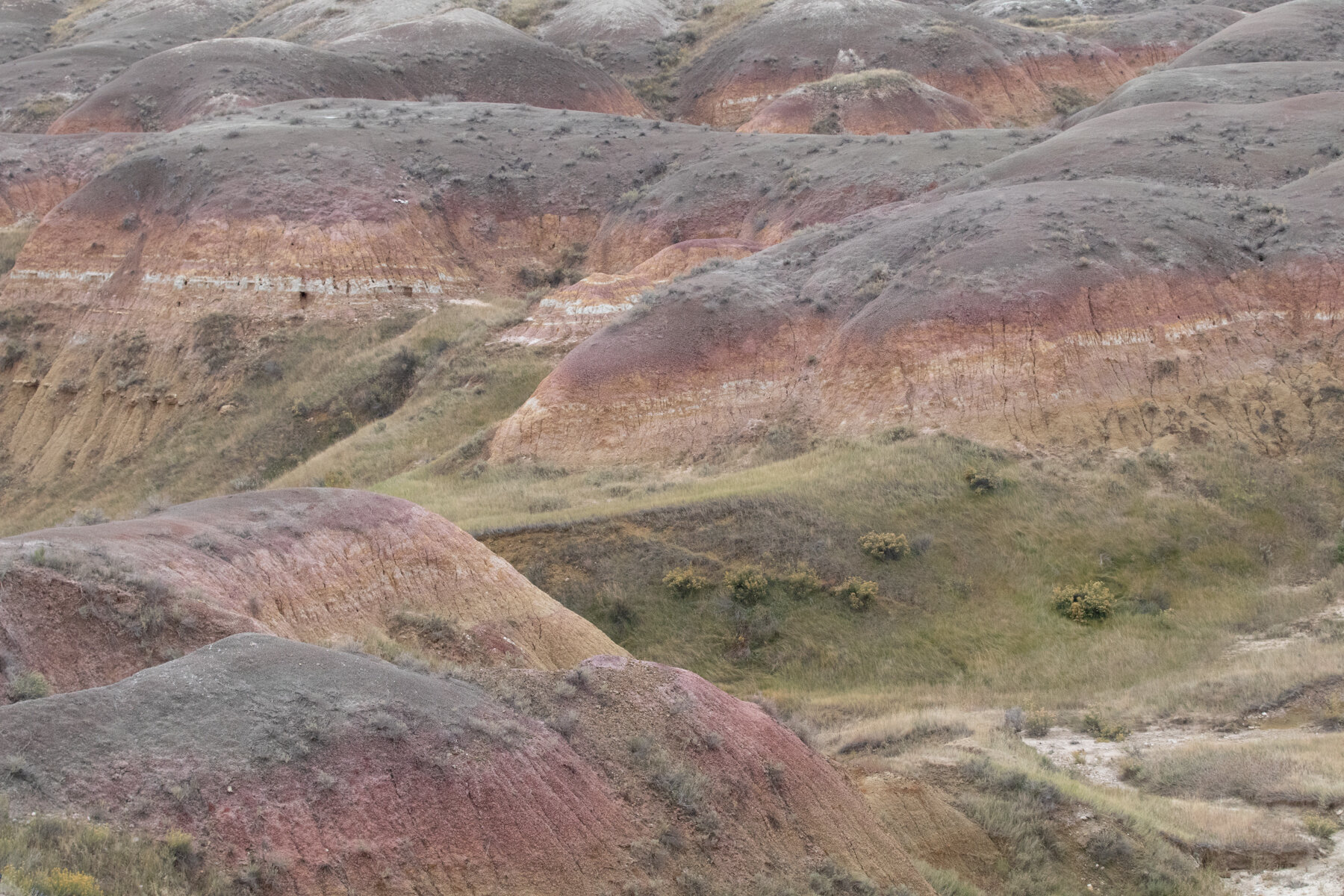
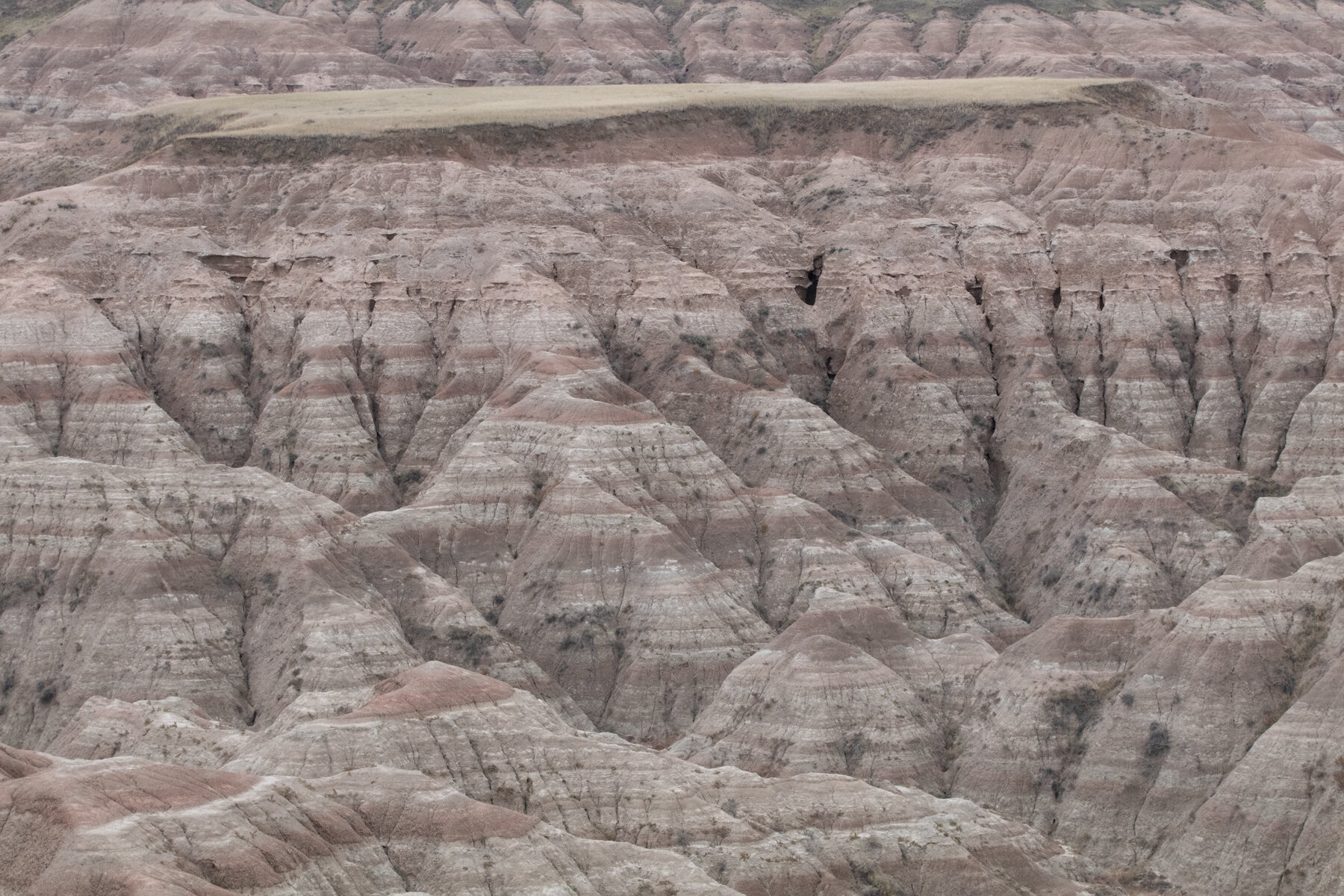
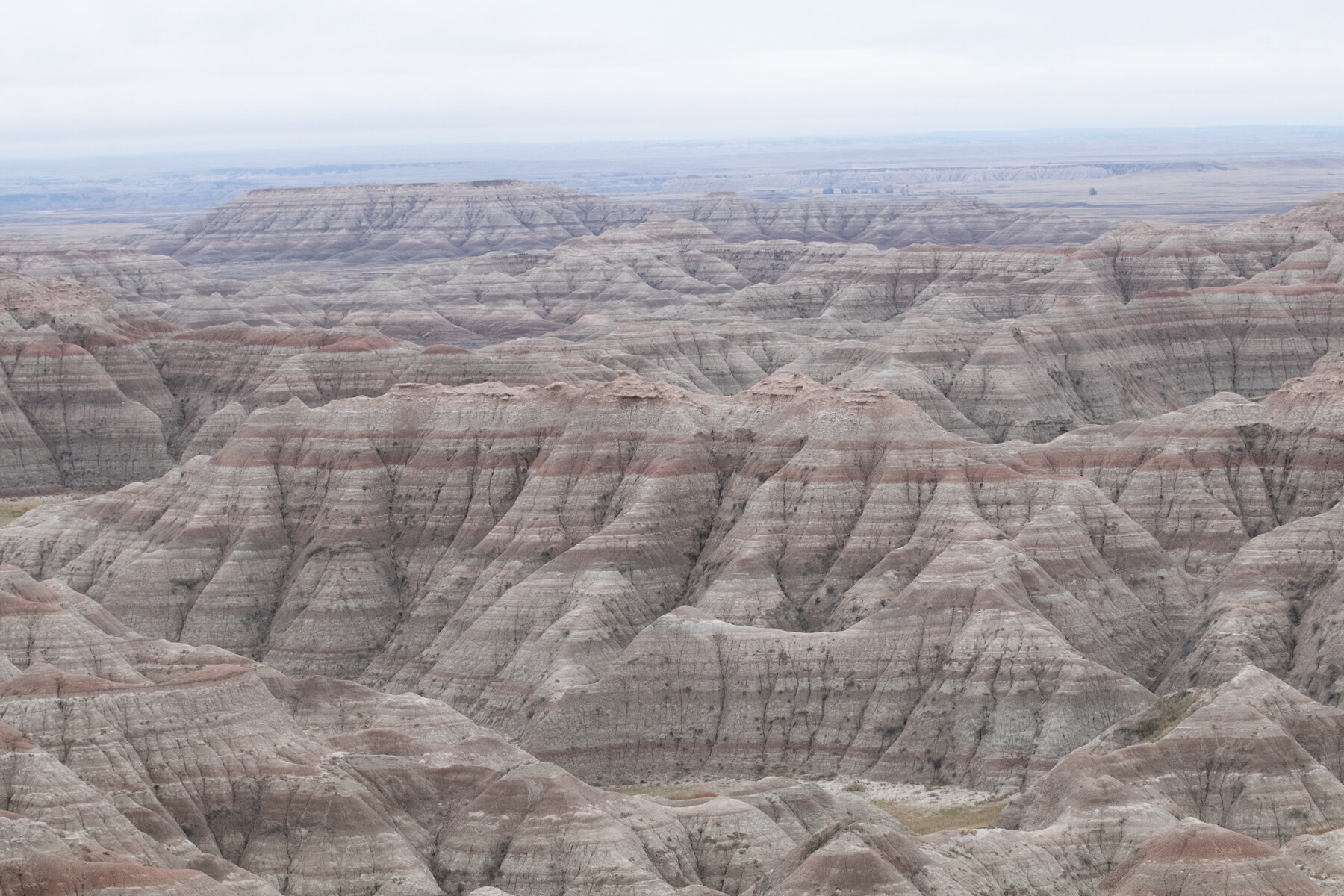
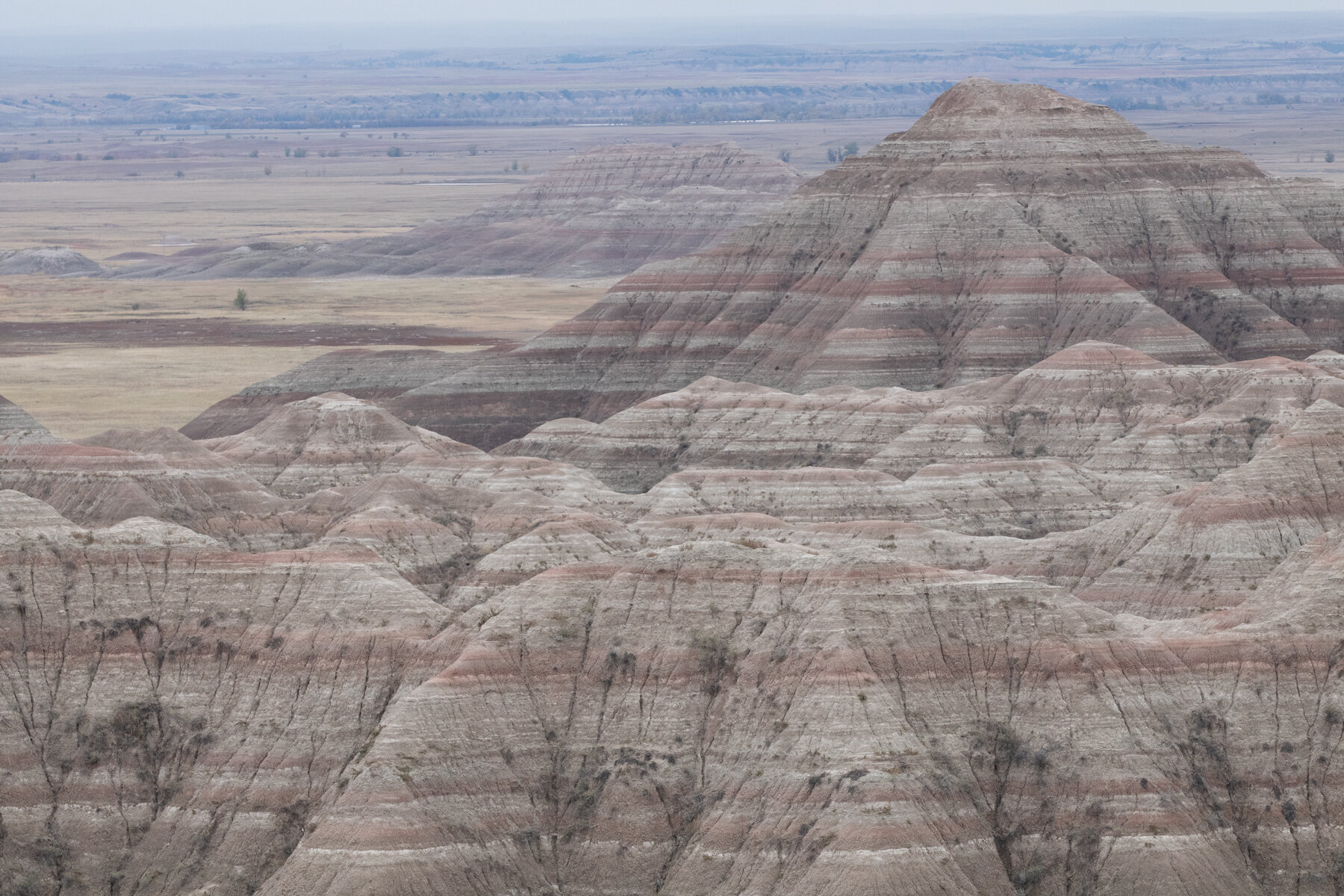
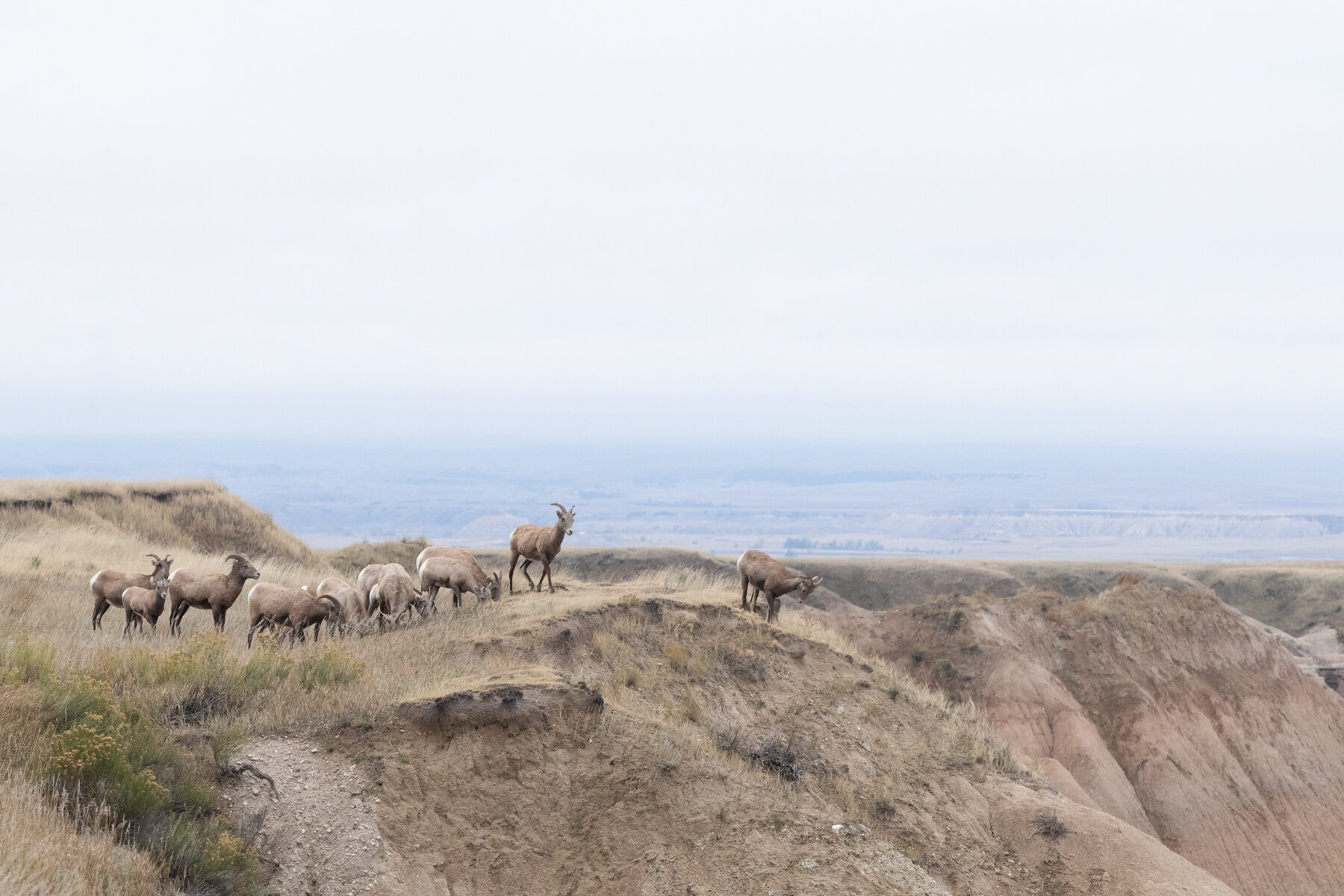
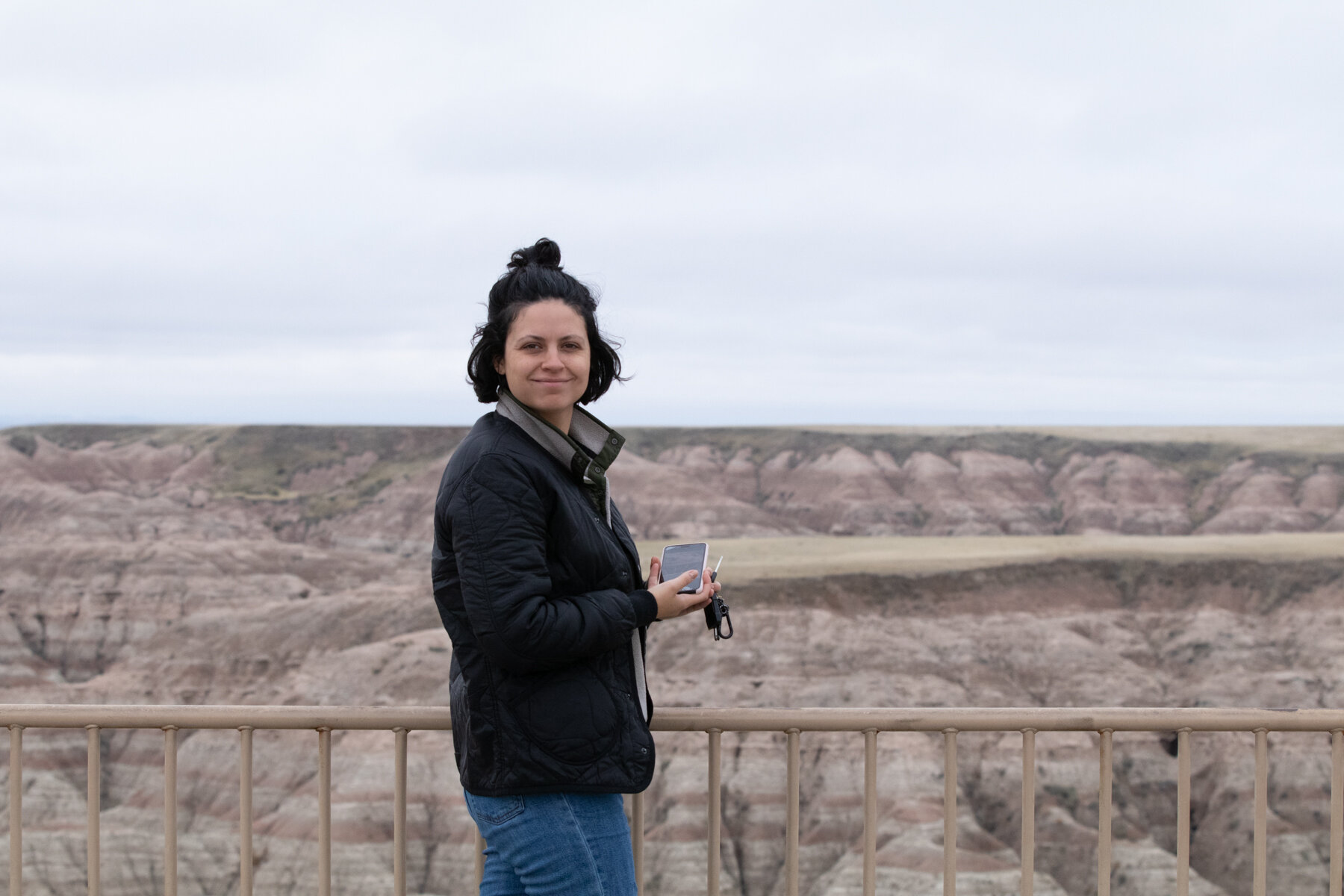
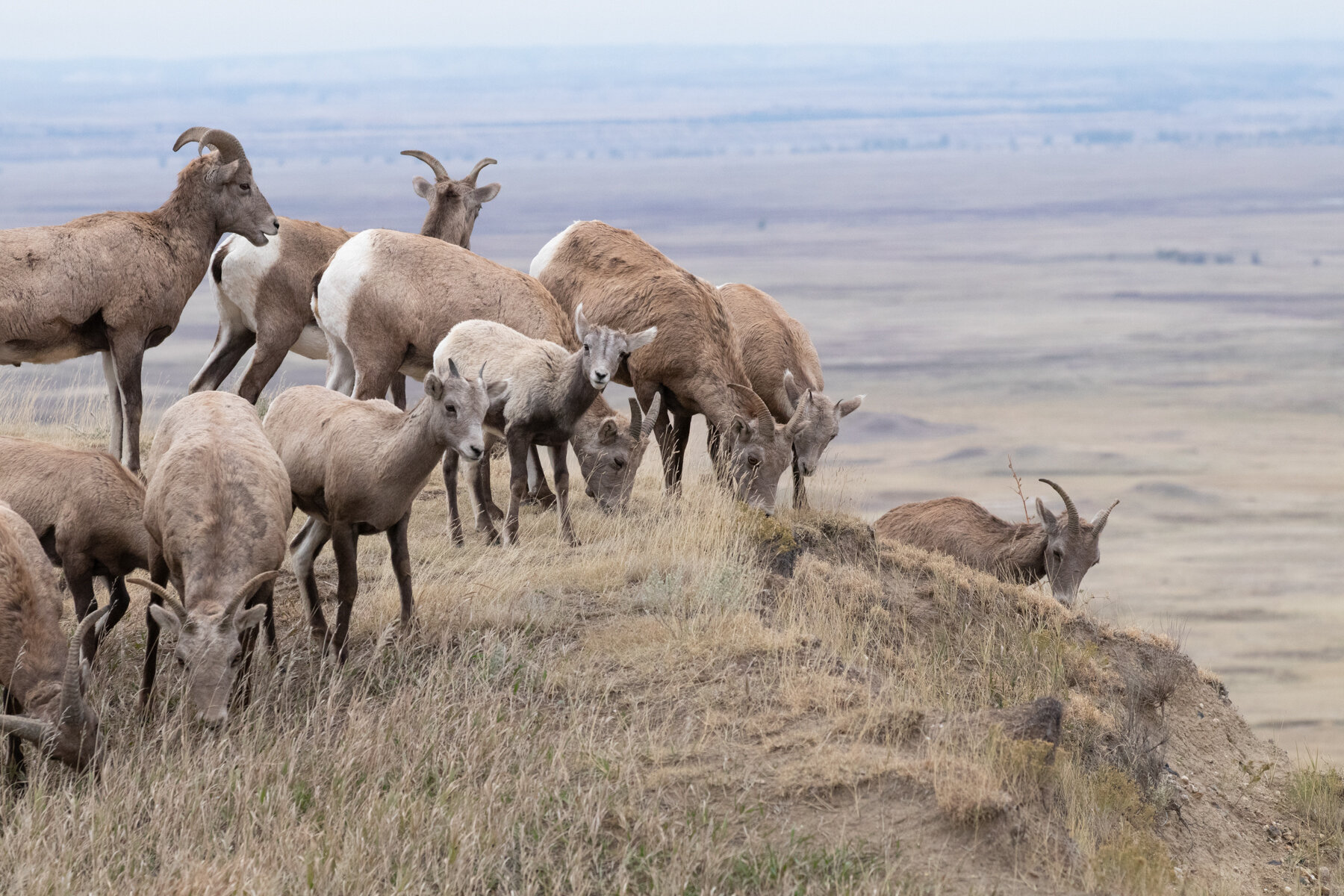
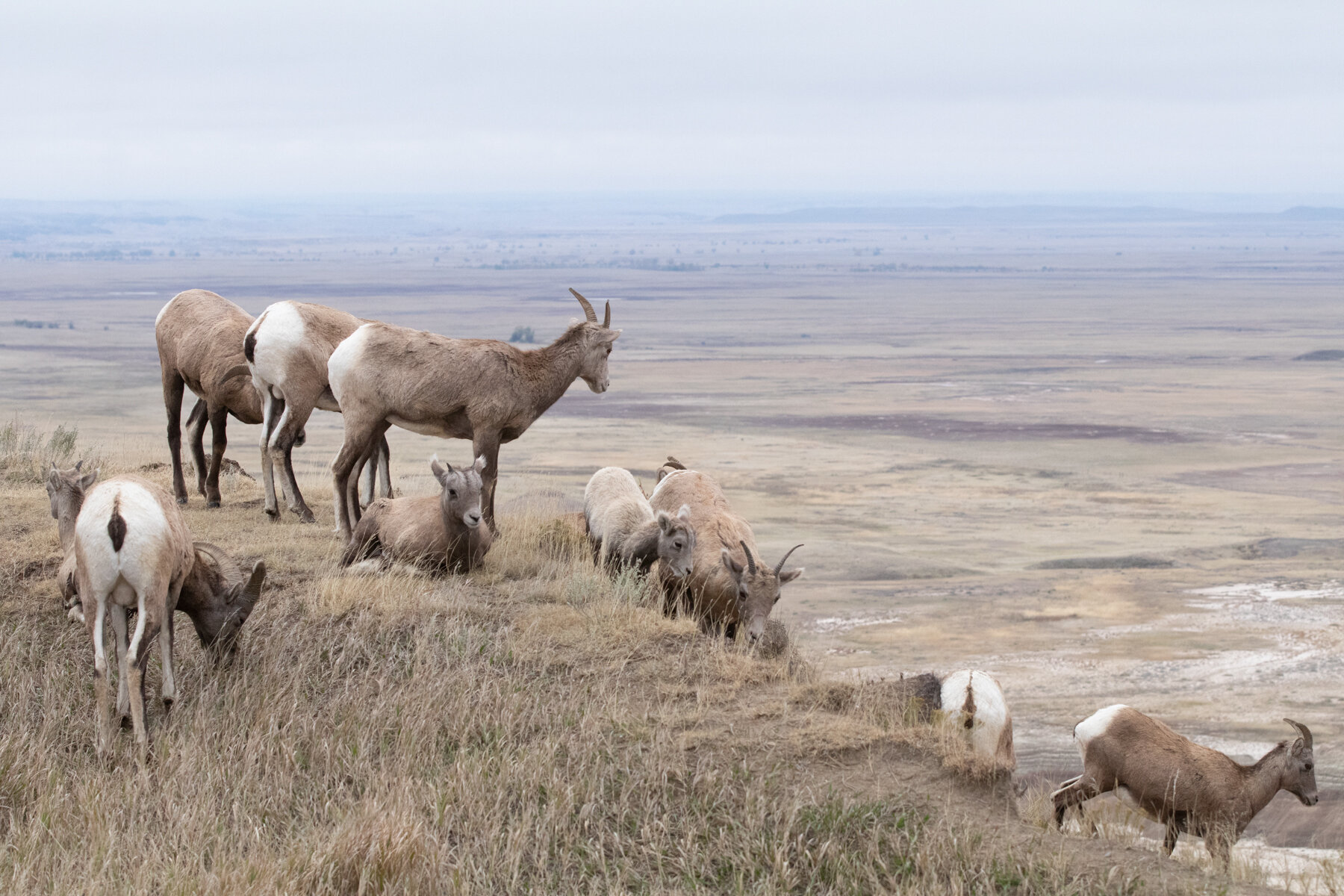
Speaking of the Black Hills, that was our next site-to-see while we were on the southwest side of South Dakota. The weather didn’t get any better, but at least it was pretty. The problem wasn’t just this early snowfall, but moreso the lack of visibility to see what we came here to see: Mount Rushmore.
When we first got to Mount Rushmore National Monument, we couldn’t see ANYTHING. Once in a while we’d be a faint outline of the cliffs themselves and then maybe a hint of a nose or facial feature to help us decipher which president was which. Even though it was technically free to visit, the price of parking wasn’t worth the lack of view on this day.
But once we were leaving, it was beginning to clear up behind us. We pulled over to get a clearer view and it looked like there were just getting done crying, which is probably why they hid their faces amongst the fog. Given the current state of the country and our leadership, I’d be crying too if I were them — but that’s a different story for another time.
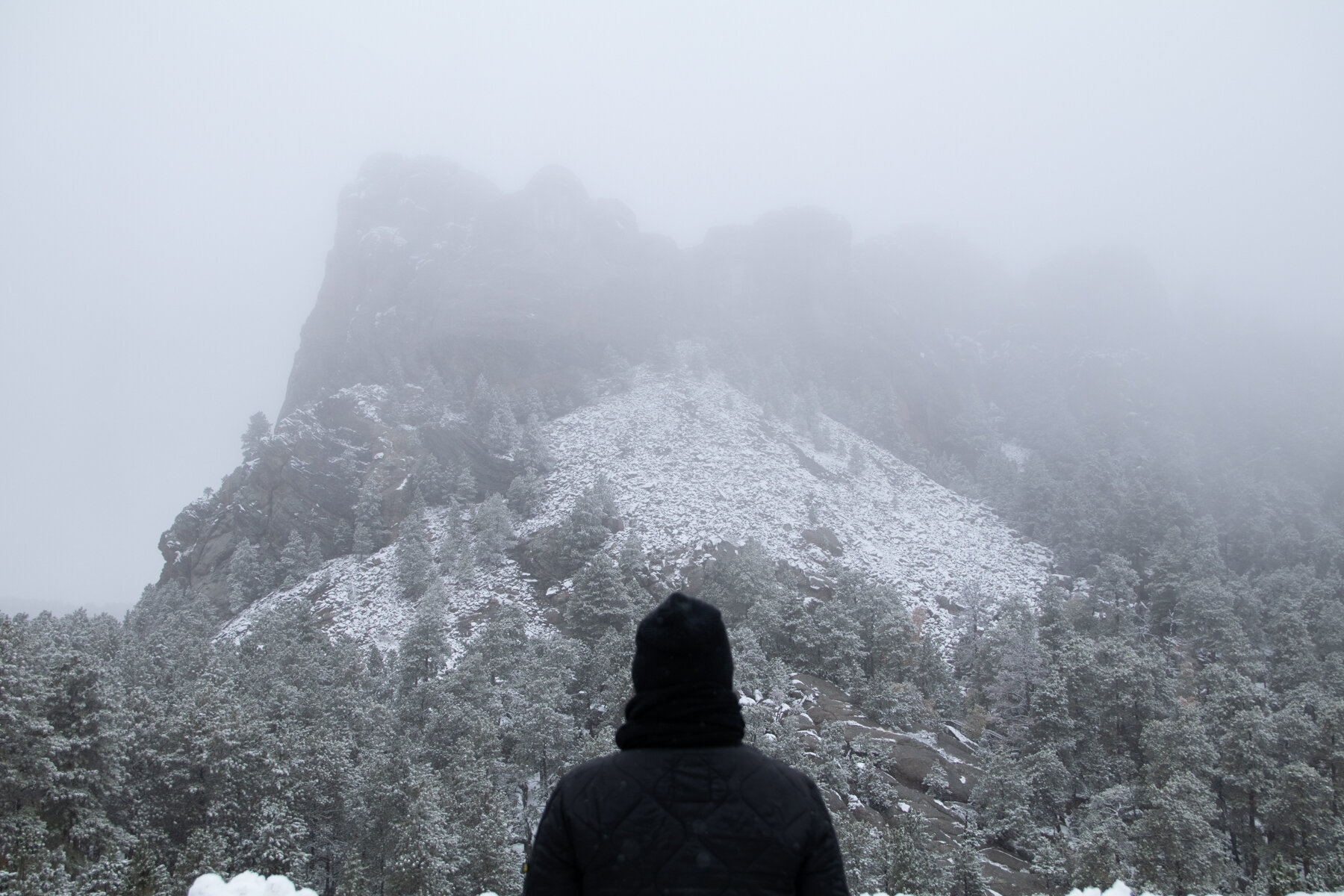
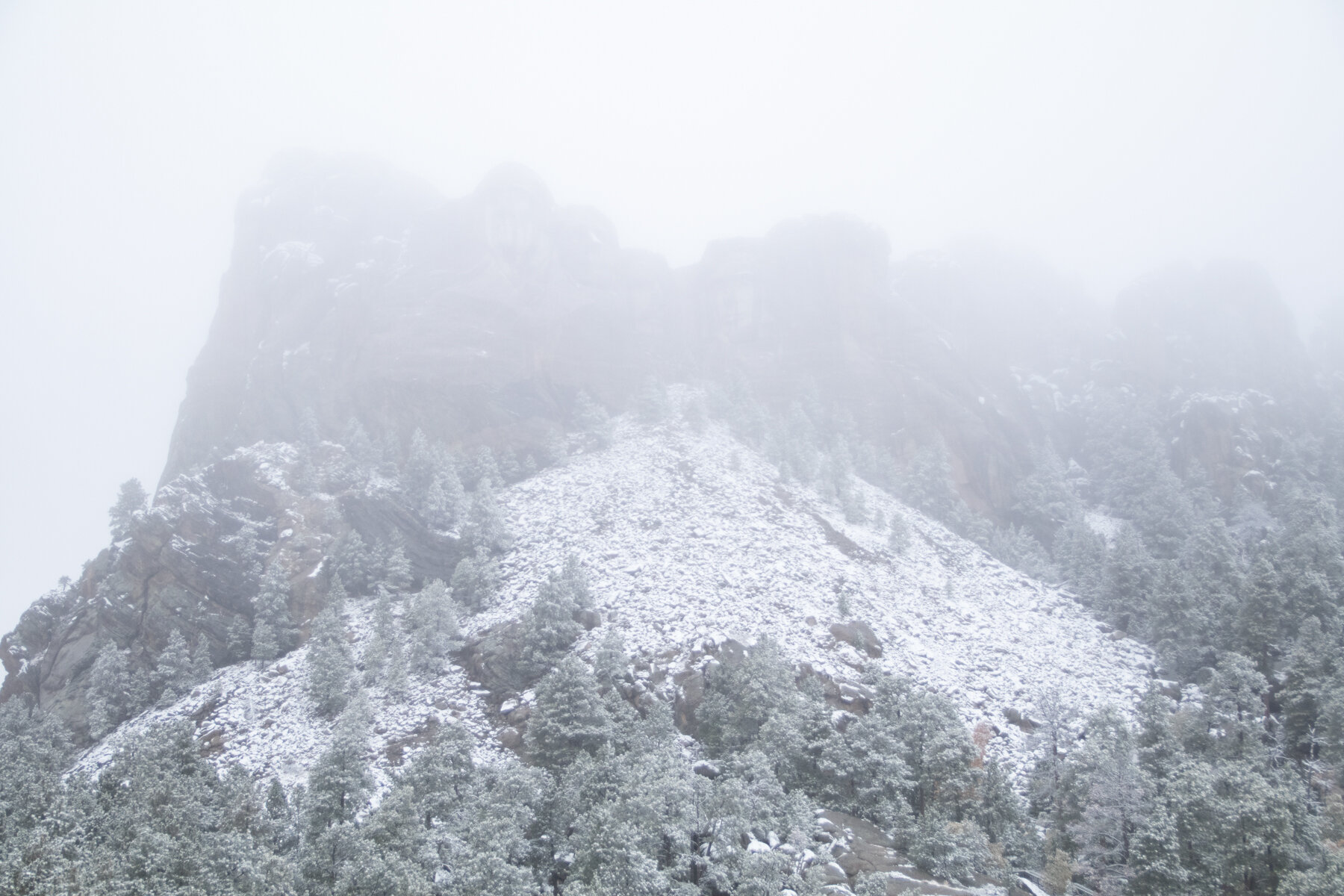
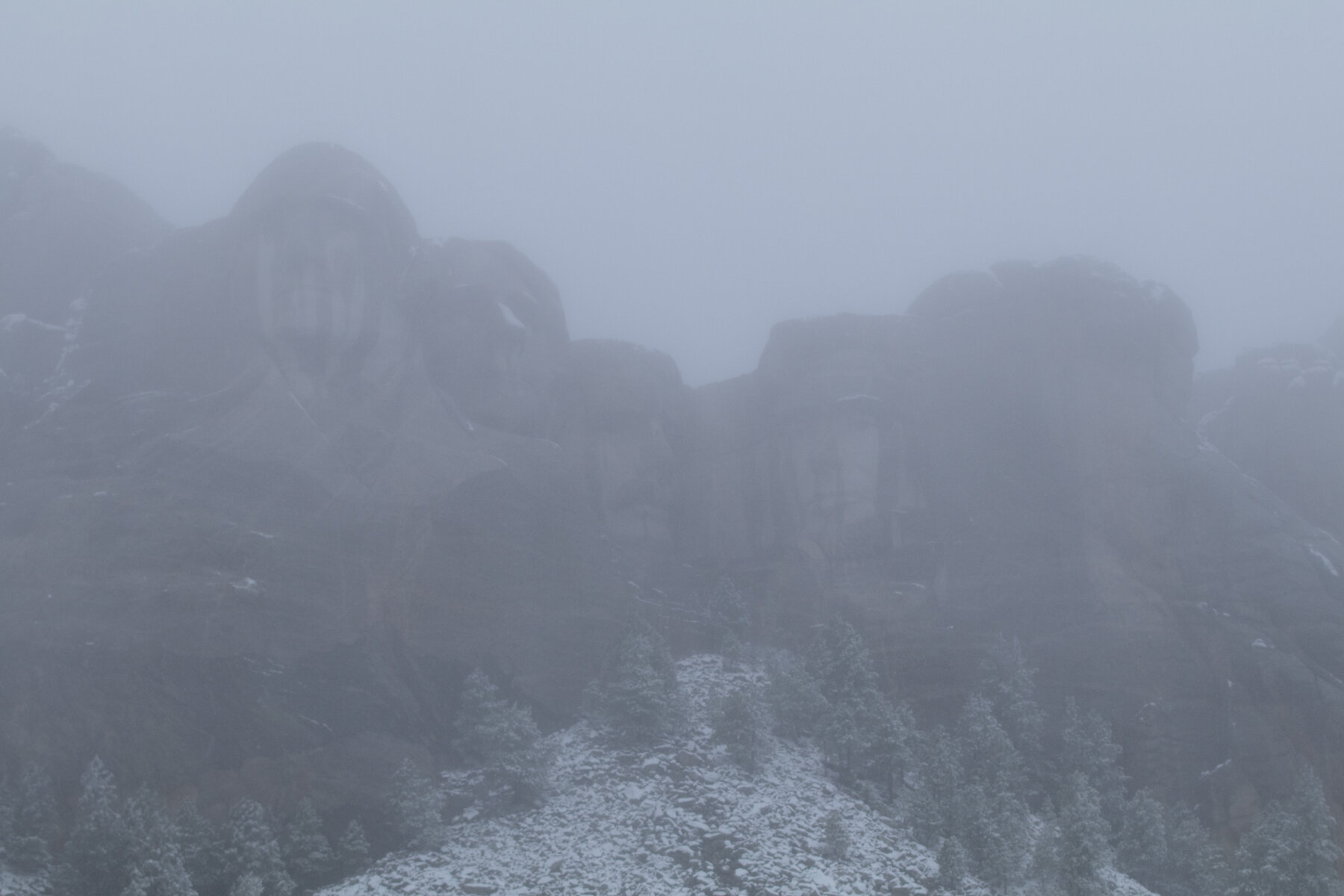
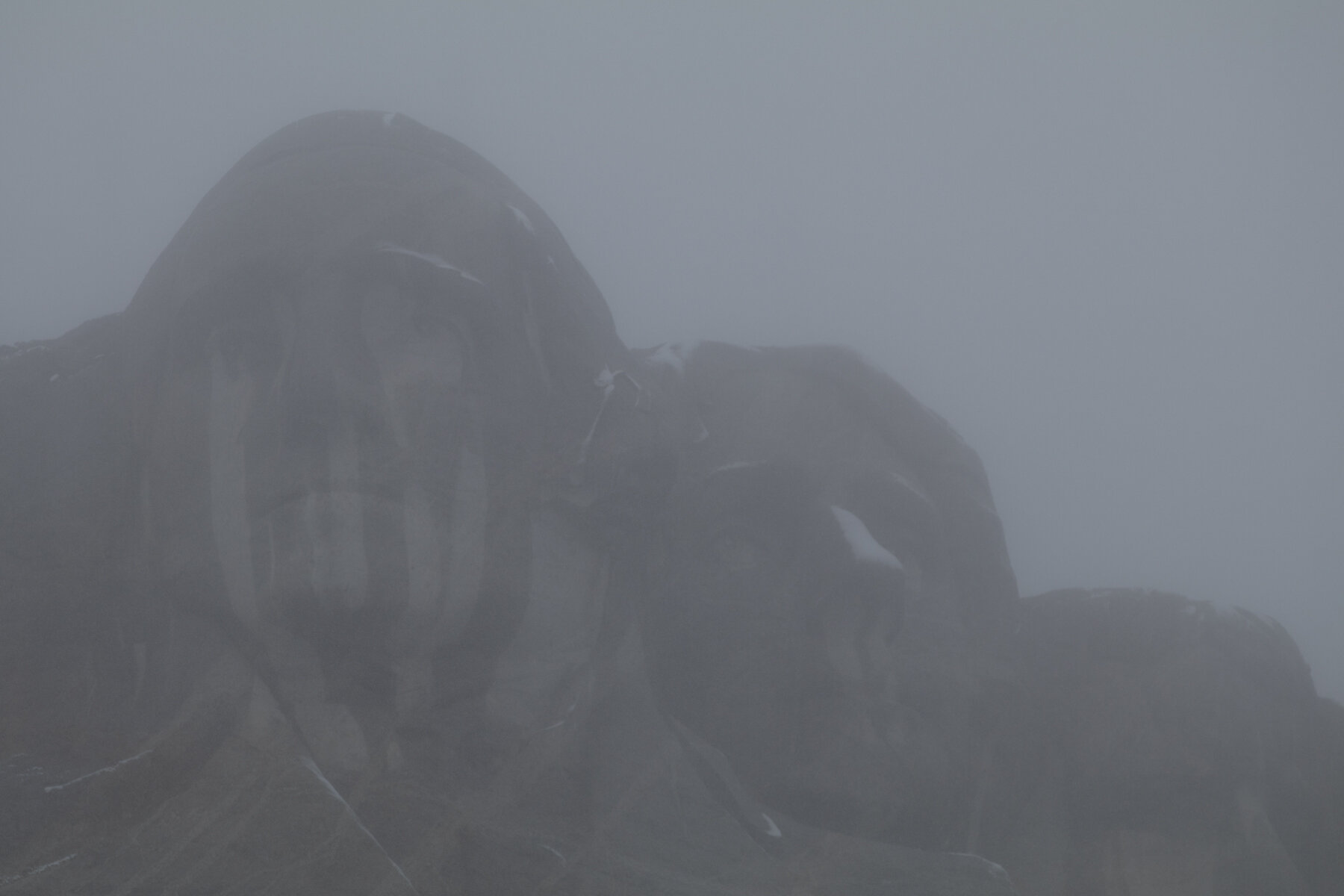
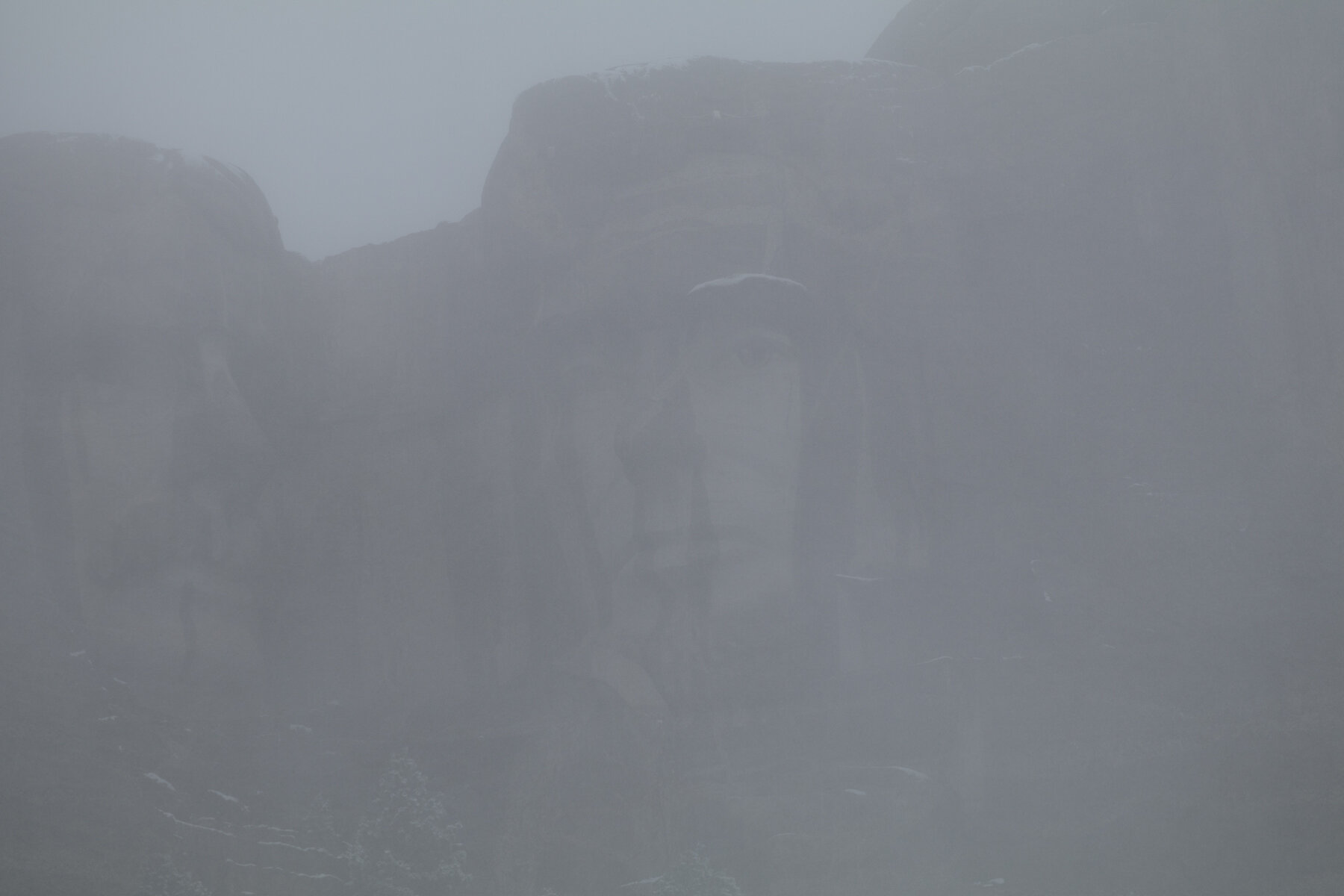

The origin story of Mount Rushmore is sadly representative of the history of our country and the hypocrisy of what we want to think of our country versus what our history really tells us about our founding. After the United States took this land to become their own, this area was eventually given back to the natives as part of the Fort Laramie Treaty of 1868 that established it as the Great Sioux Reservation. That was, until gold was discovered in the Black Hills and the United States wanted it back, even if the required by force by way of the Great Sioux War of 1876 and Wounded Knee Massacre in 1890.
Then some time later, it was thought to carve four presidents faces into the rocks to increase tourism to the area. The four presidents (Washington, Jefferson, Roosevelt, and Lincoln) were chosen to represent the nation’s birth, growth, development, and preservation.
As a white male born and raised in the United States, I wish we were a little more honest about our history. Yes, there was plenty of good men and women who sacrificed so much to establish a foundation for a democratic nation, but there is much of our history that is either ignored or glossed over to reduce our faults and wrongdoings. How can we learn from others mistakes if we’re not honest and transparent about them? In order to continue to evolve into a better country for all, we need to be a bit more honest with ourselves when we look at ourselves in the mirror.
On that note, after visiting Mount Rushmore we proceeded to gain a different perspective of a monument at the Crazy Horse Memorial roughly 17 miles away in a different area of the Black Hills.
Crazy Horse was a leader of the Oglala Lakota Nation in the mid 1800s and is regarded as one of the great Native American tribal members. This monument featuring him pointing from on top of his horse has been a work in progress since 1948, commissioned by Lakota elder Henry Standing Bear to artist Korczak Ziolkowski.
It’s hard to realize the scale of the monument until you read that once it’s completed, it will be 563 feet high and 641 feet long, making it the second tallest statue after Lady Liberty in New York. In comparison, the heads of the Presidents on Mt. Rushmore are each 60 feet tall.
In addition to the WIP statue, the grounds have an Indian Museum of North America and Native American Cultural Center full of the history, artifacts, artwork, and more of the Lakota and other Native American tribes. It was a special moment for us to stand alongside a grandparent looking up at a wall of portraits of Native American elders while he shared pieces of his knowledge and history with his grandson — a reminder that history is living amongst us still today.
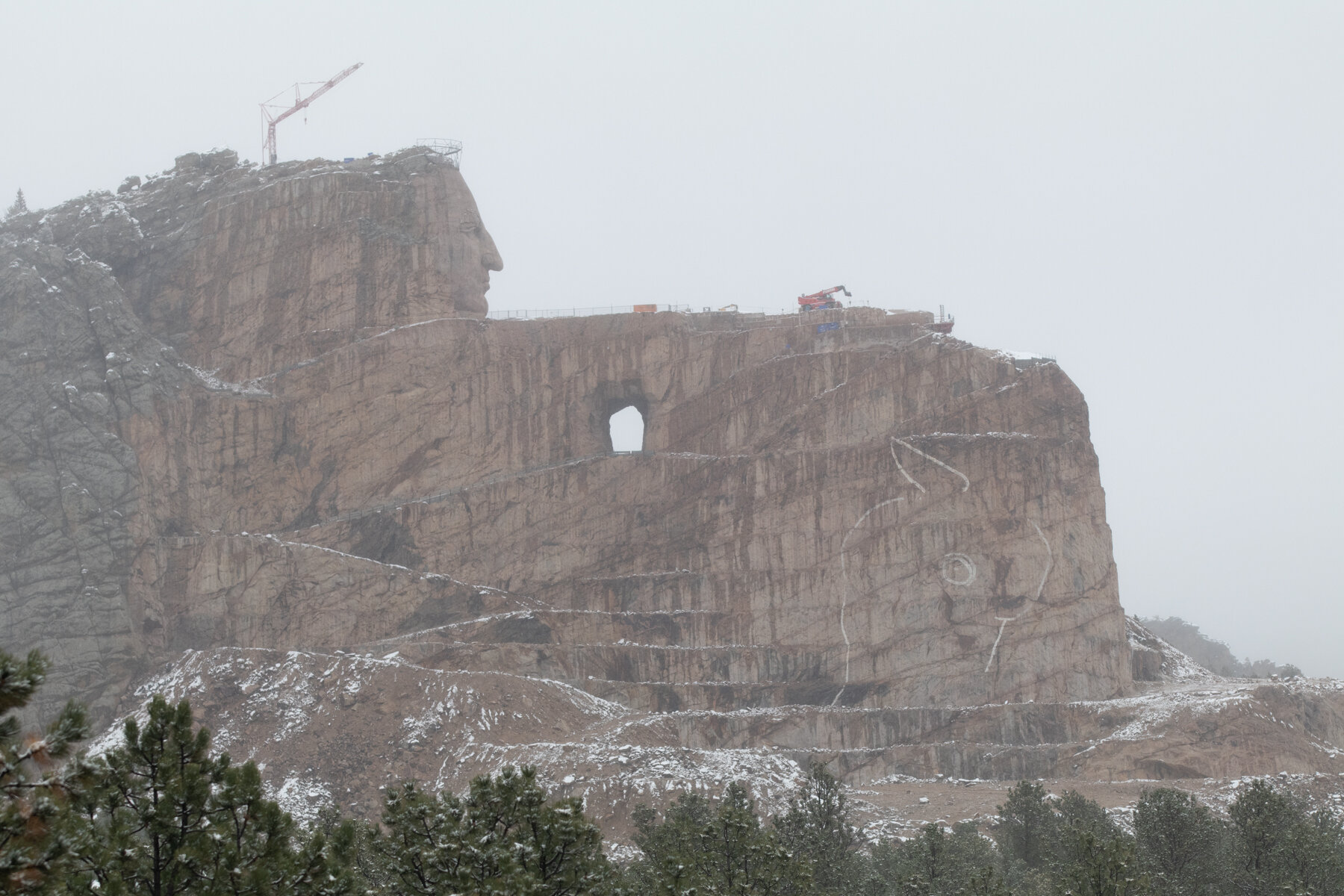
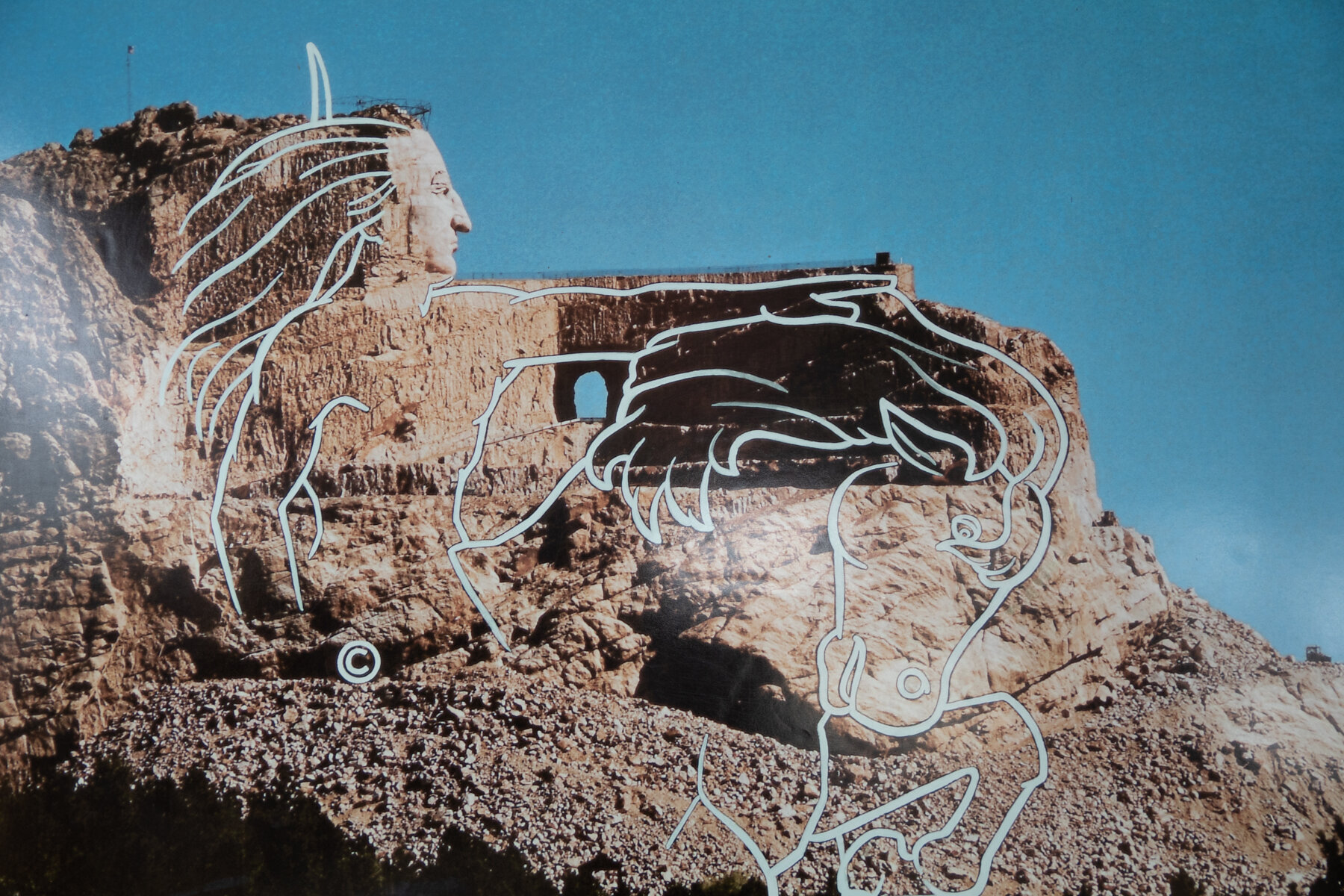
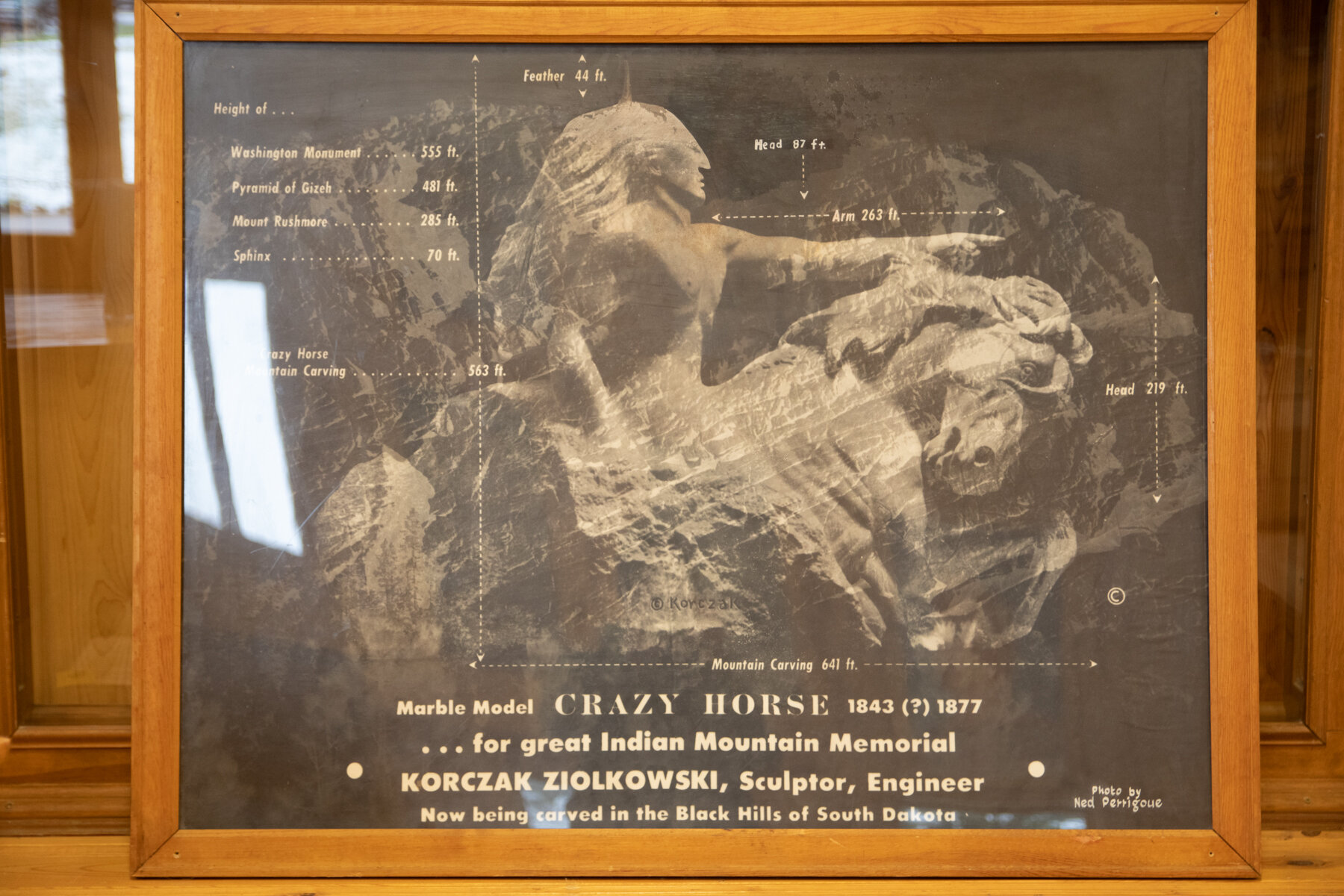
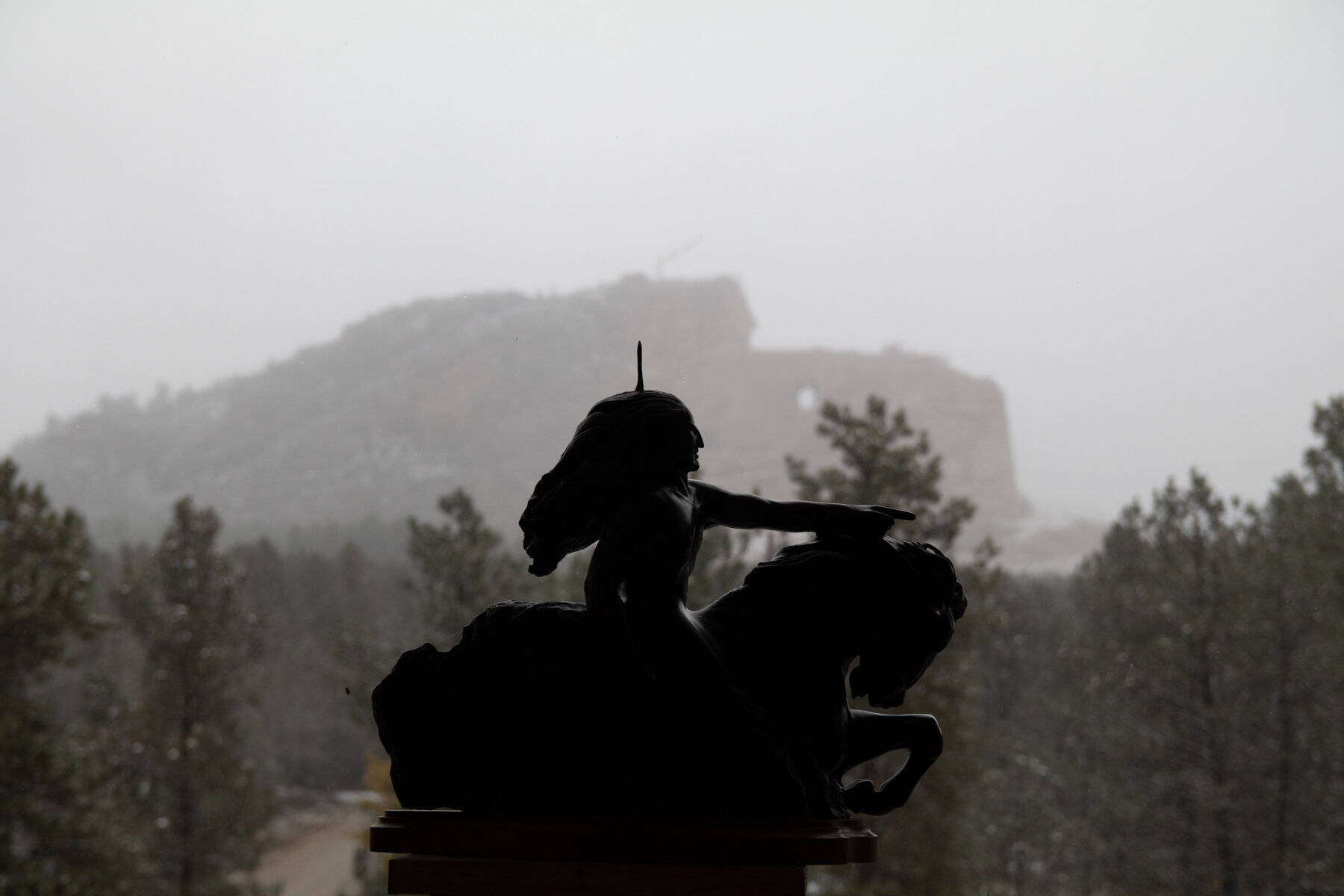
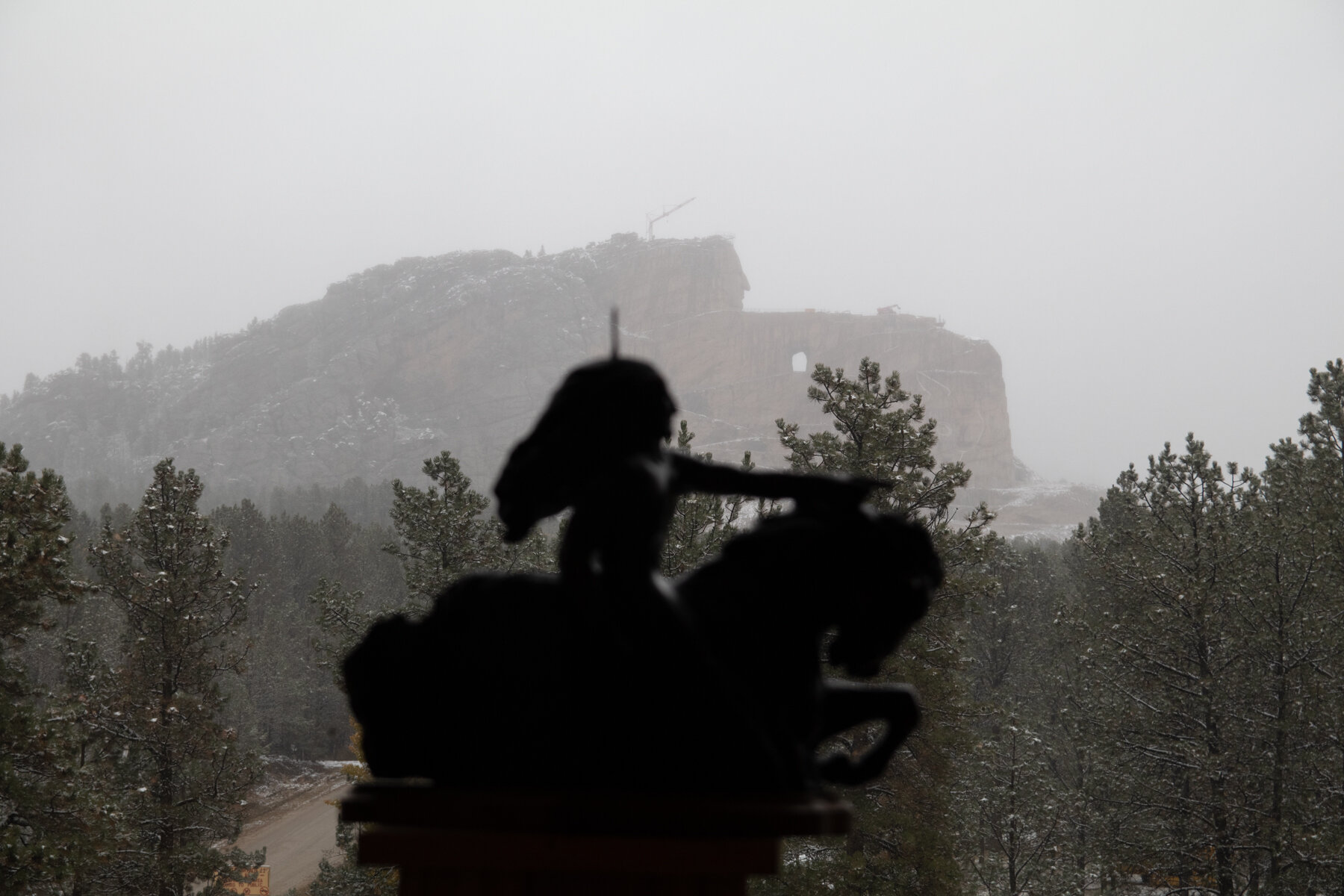
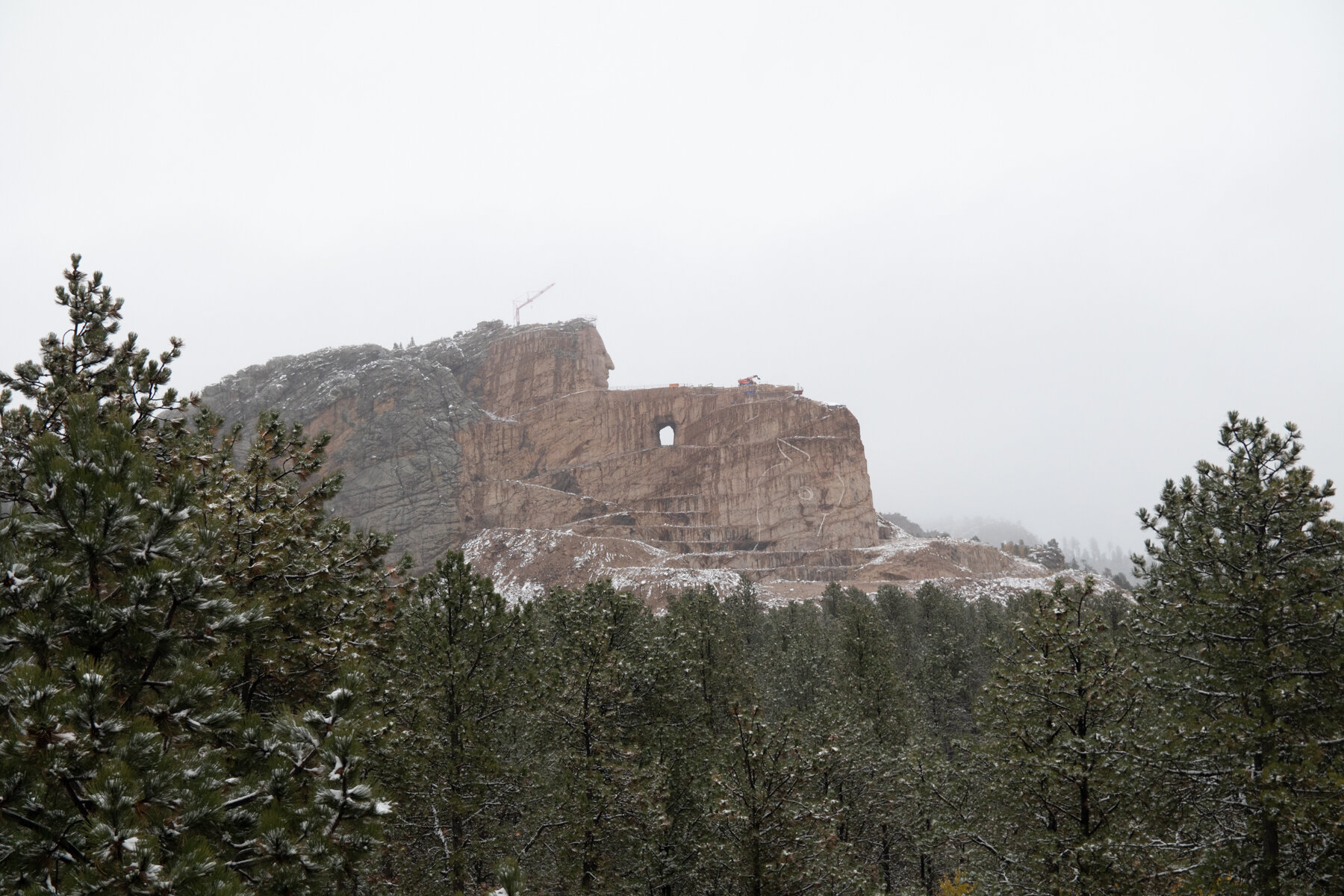
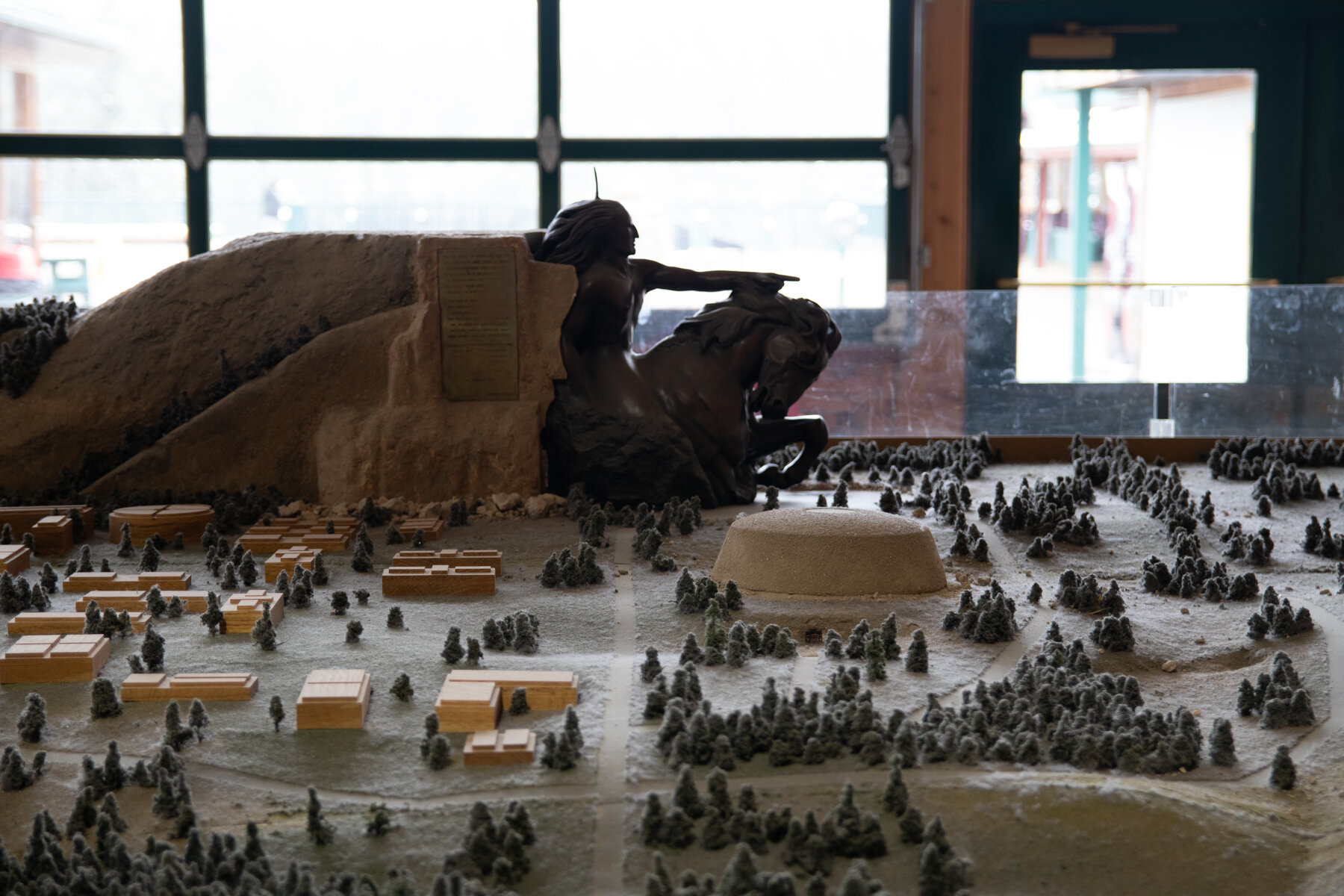
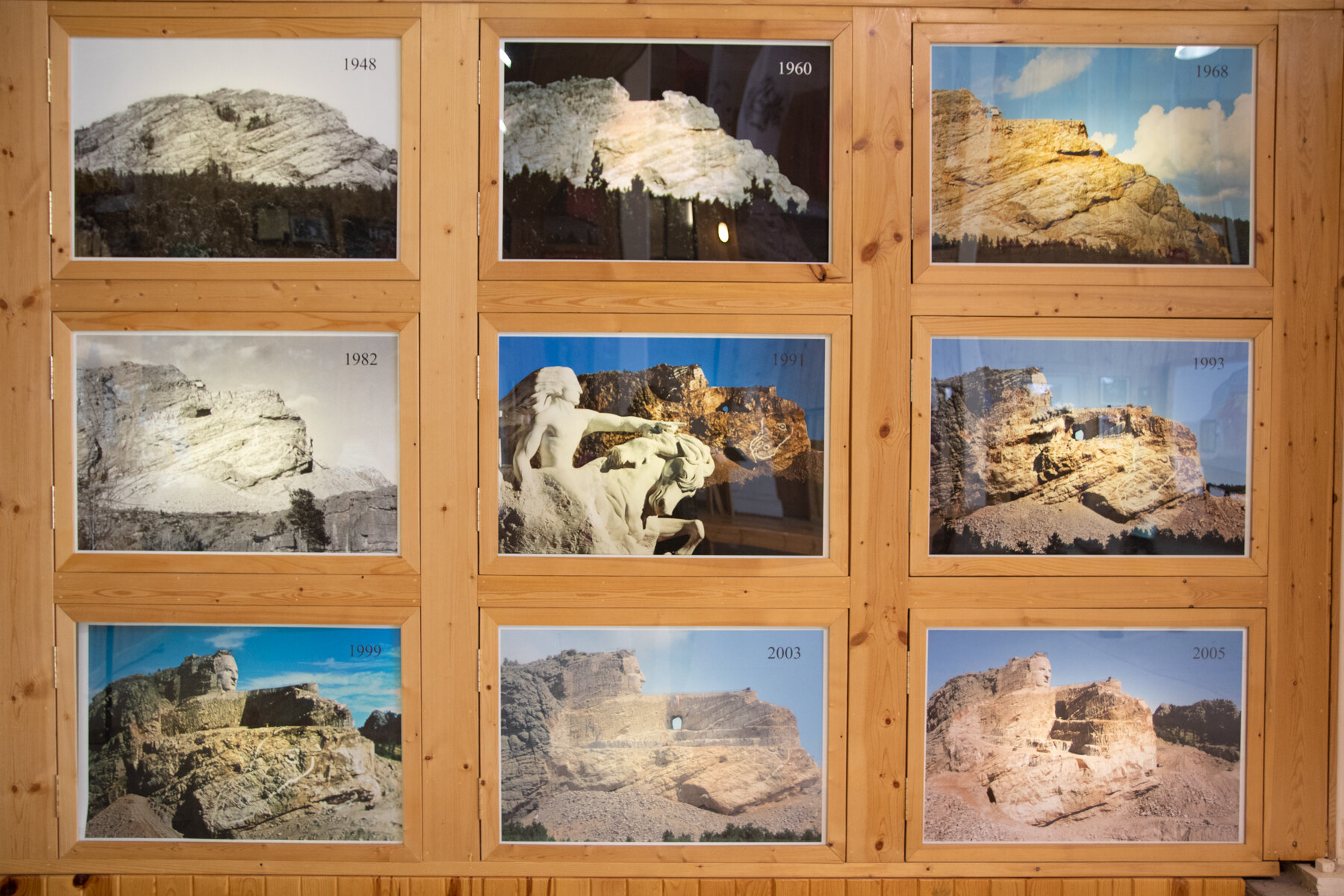


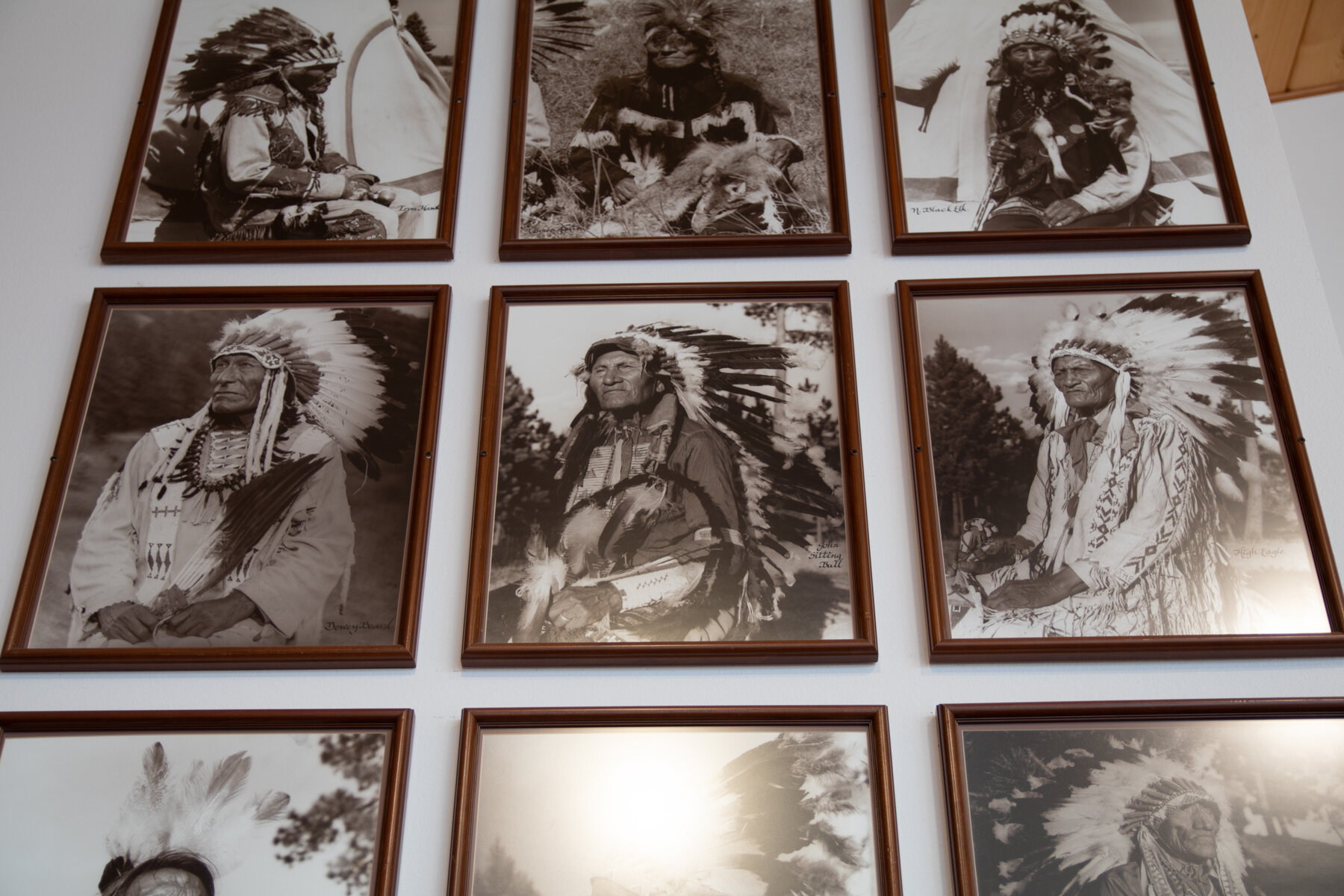
After a few days in southern South Dakota, we drove back down into Nebraska and were unhappily welcomed by a heavy and wet blanket of snow. Thankfully, we were able to stay in for a work day with plenty of blankets and rounds of coffee to keep us warm, happy, and busy at Camp A Way campground in Lincoln, NE.
Eventually the snow melted away and we were able to enjoy blue skies around downtown Lincoln, the state capital of Nebraska and also home to the University of Nebraska, where we conducted our STATE 30: NE project at the Lincoln Innovation Studio.
Admittedly, we didn’t spend much time in Lincoln mainly due to time and cost restrictions, but we were able to explore segments of the city. One of my favorite parts was this beautiful, mid century office building that more than likely gets overlooked by most Lincoln residents. But for me seeing it for the first time, I really appreciated it’s simple lines, vertical windows, and an elongated overhang with a see-through view of entrances from both sides of the building.
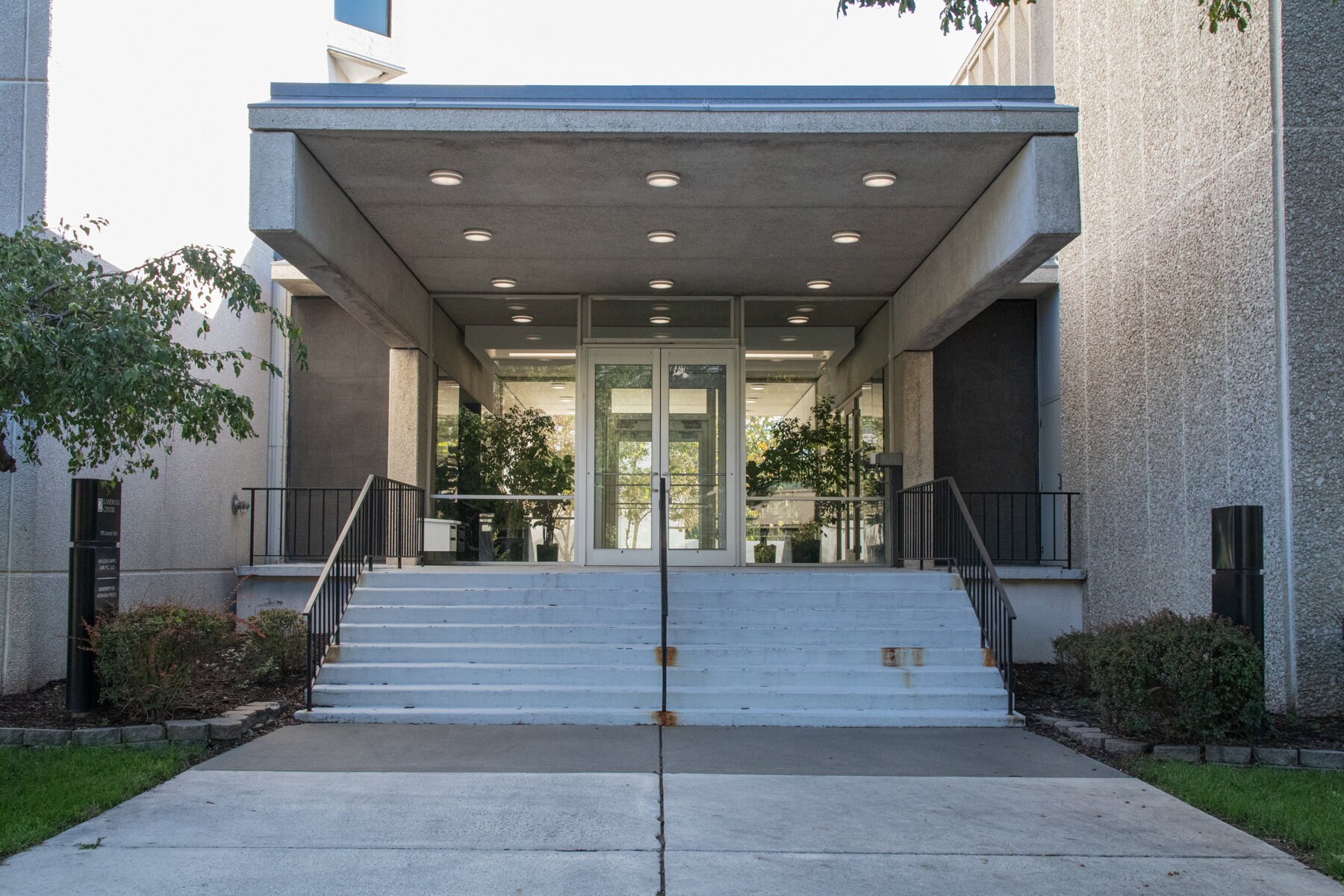
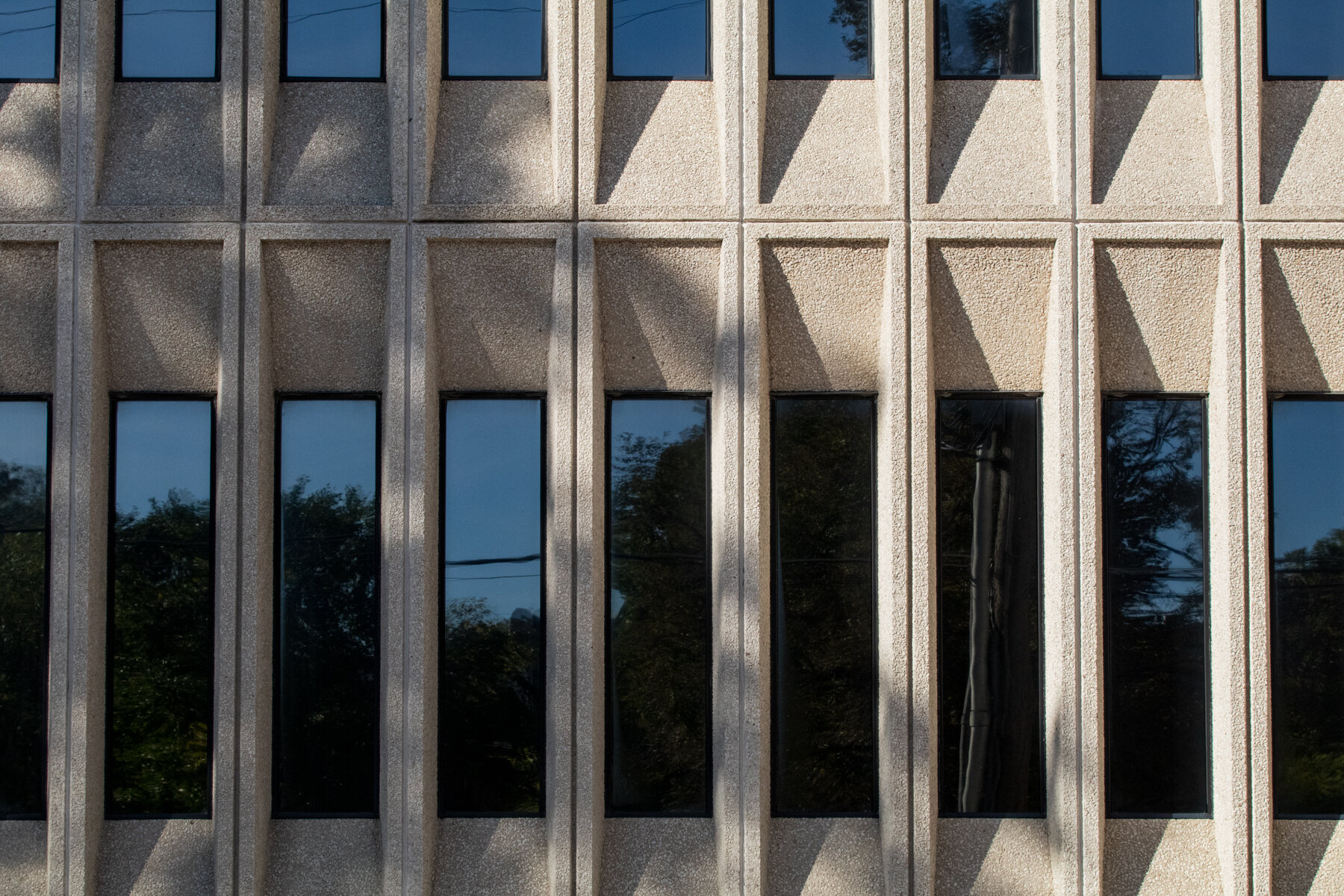
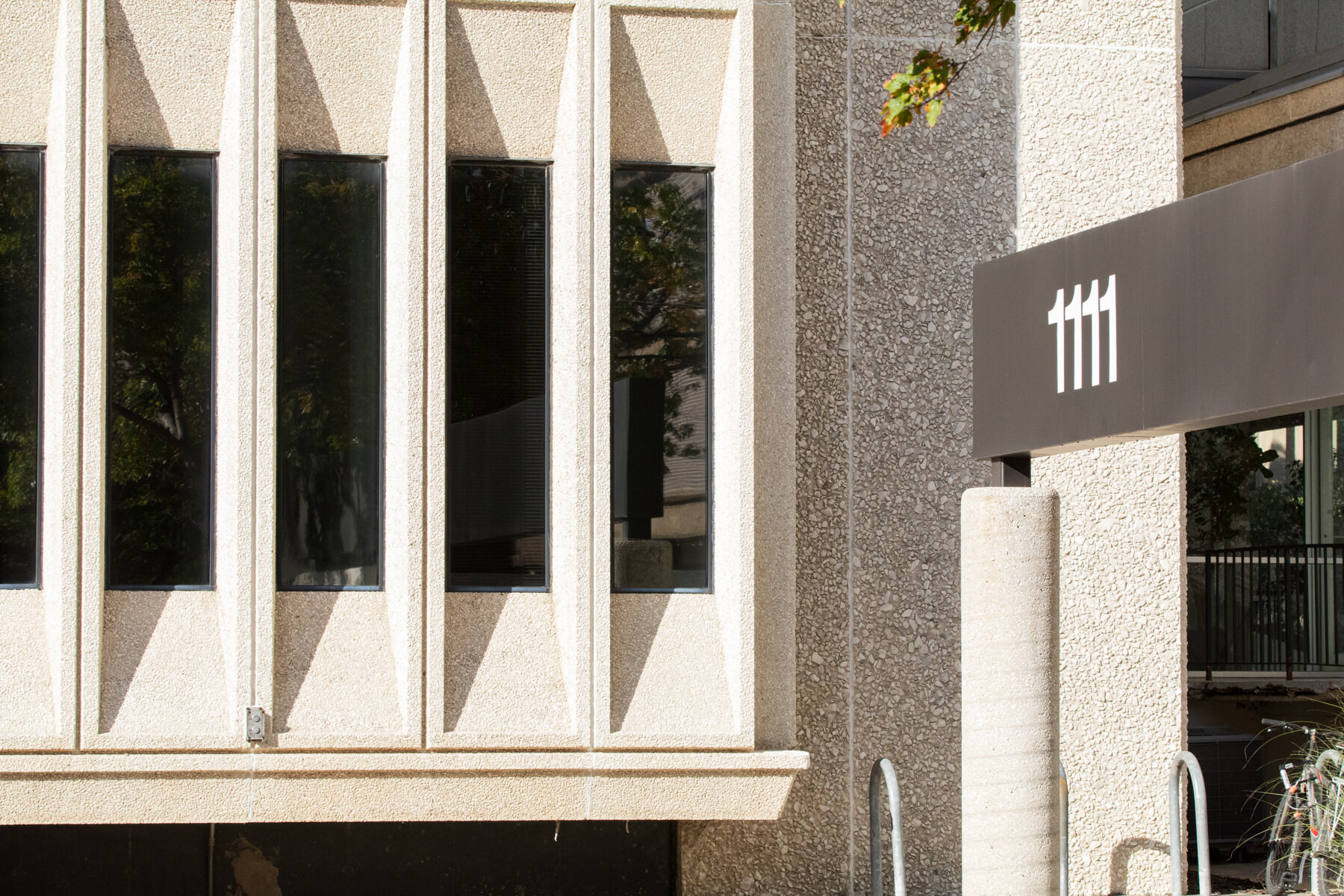

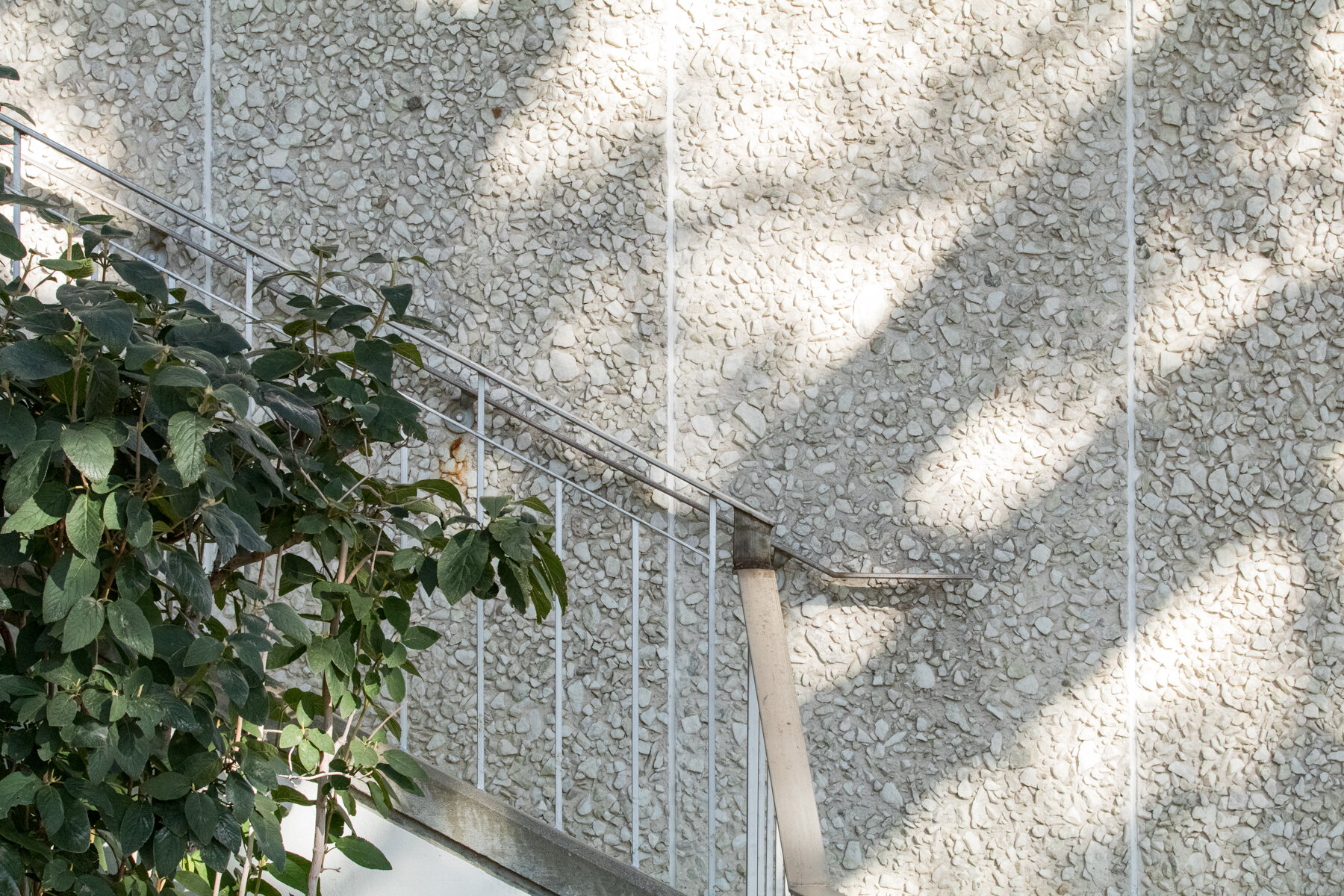
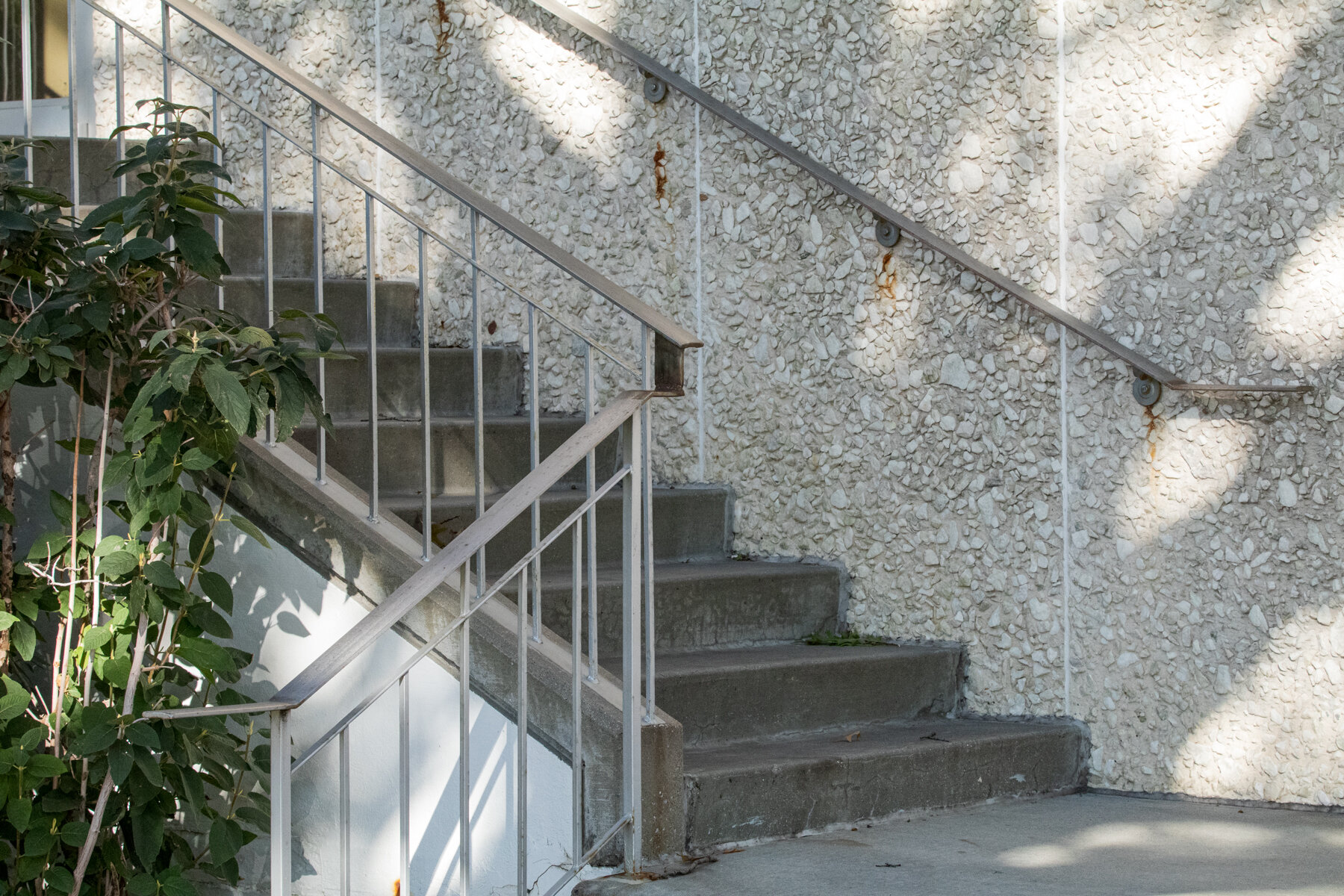

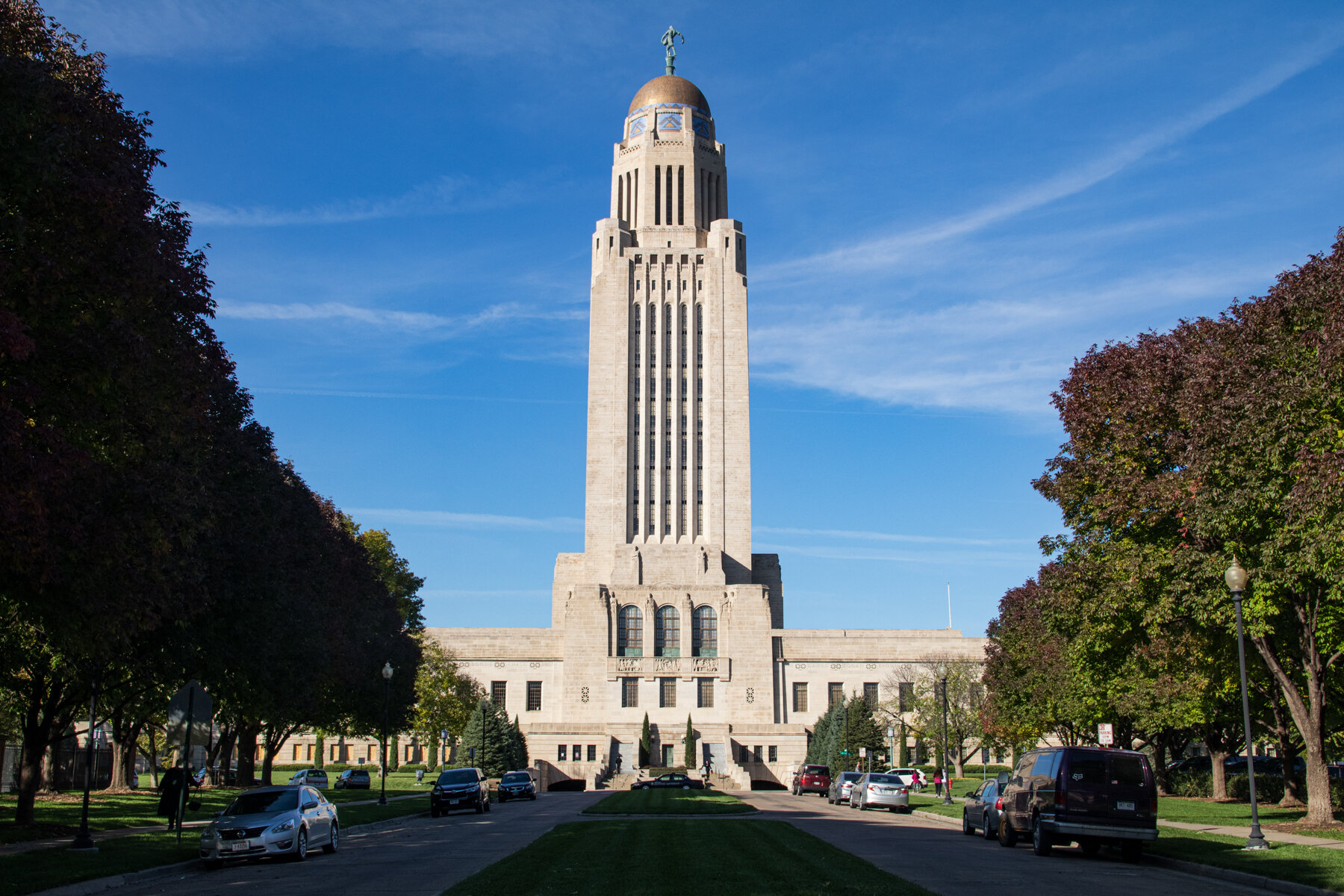
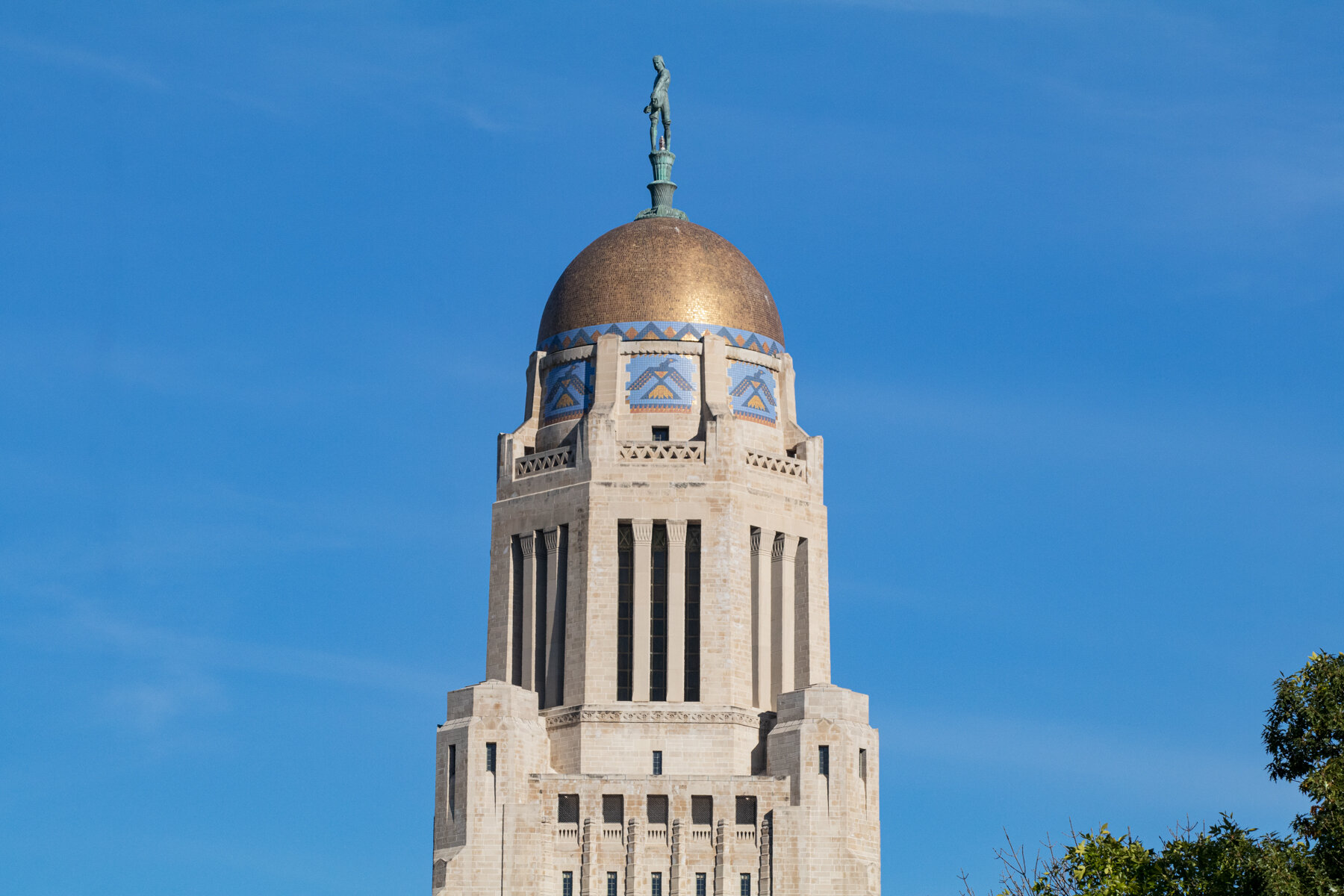

In addition to little time spent in Lincoln, we spent even less time (unfortunately) in Omaha, which is home to more than just mail-order steaks and billionaire Warren Buffett. We’ve heard a lot about the food in Omaha and creative scene. Although we weren’t able explore it much ourselves, we were pleased to be invited to a talk and exhibit show by AIGA Nebraska where we were at least able to meet and mingle with a handful of local creatives and experience highlights of their work.
Next time around, we’d love to spend more time in Omaha and Lincoln to get a better taste of their city life, something you don’t often associate with Nebraska. But these type of small to mid-size cities are often the best kept semi-secrets the United States has to offer outside of the major urban hubs.
Until next time, Cornhuskers.

